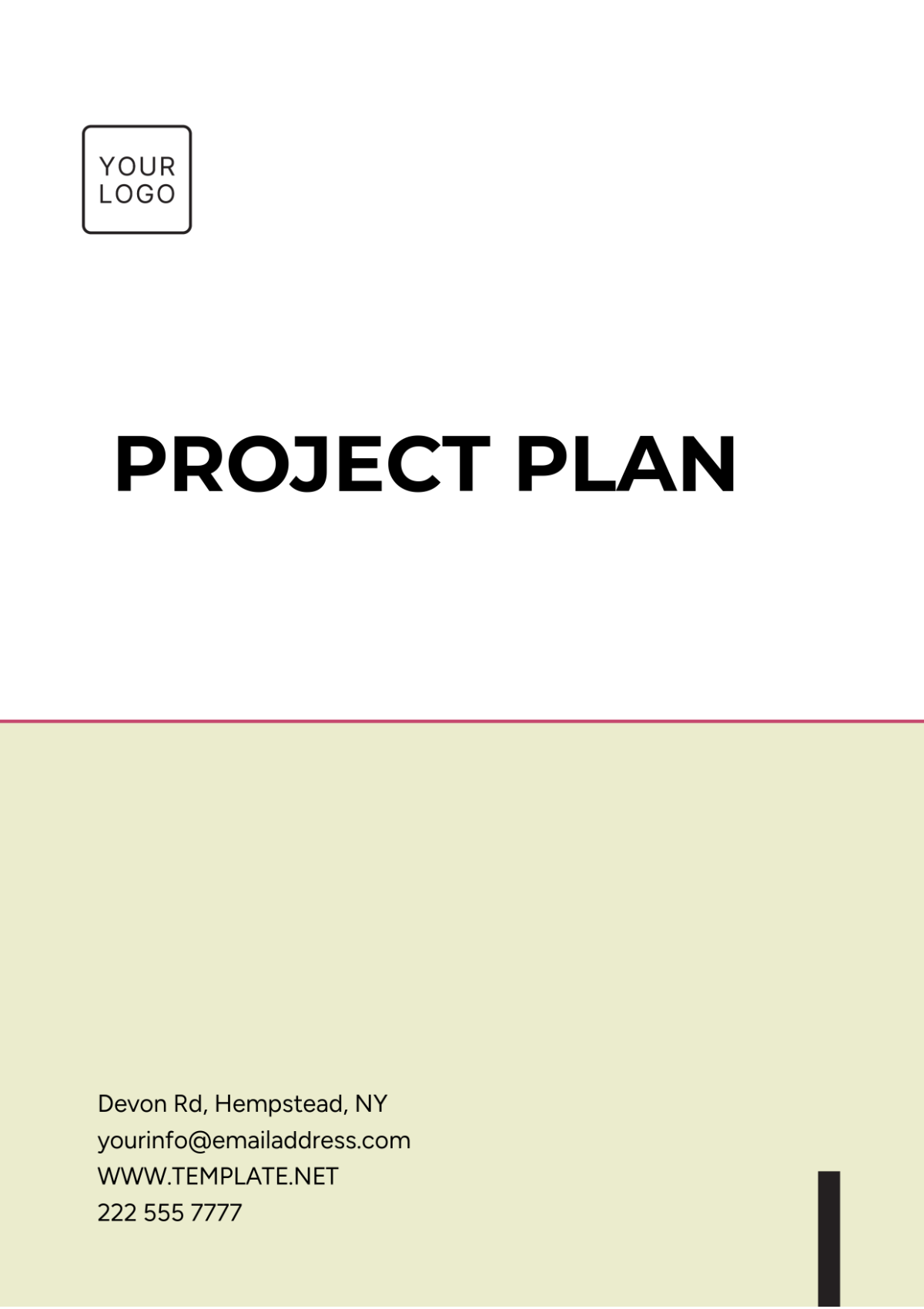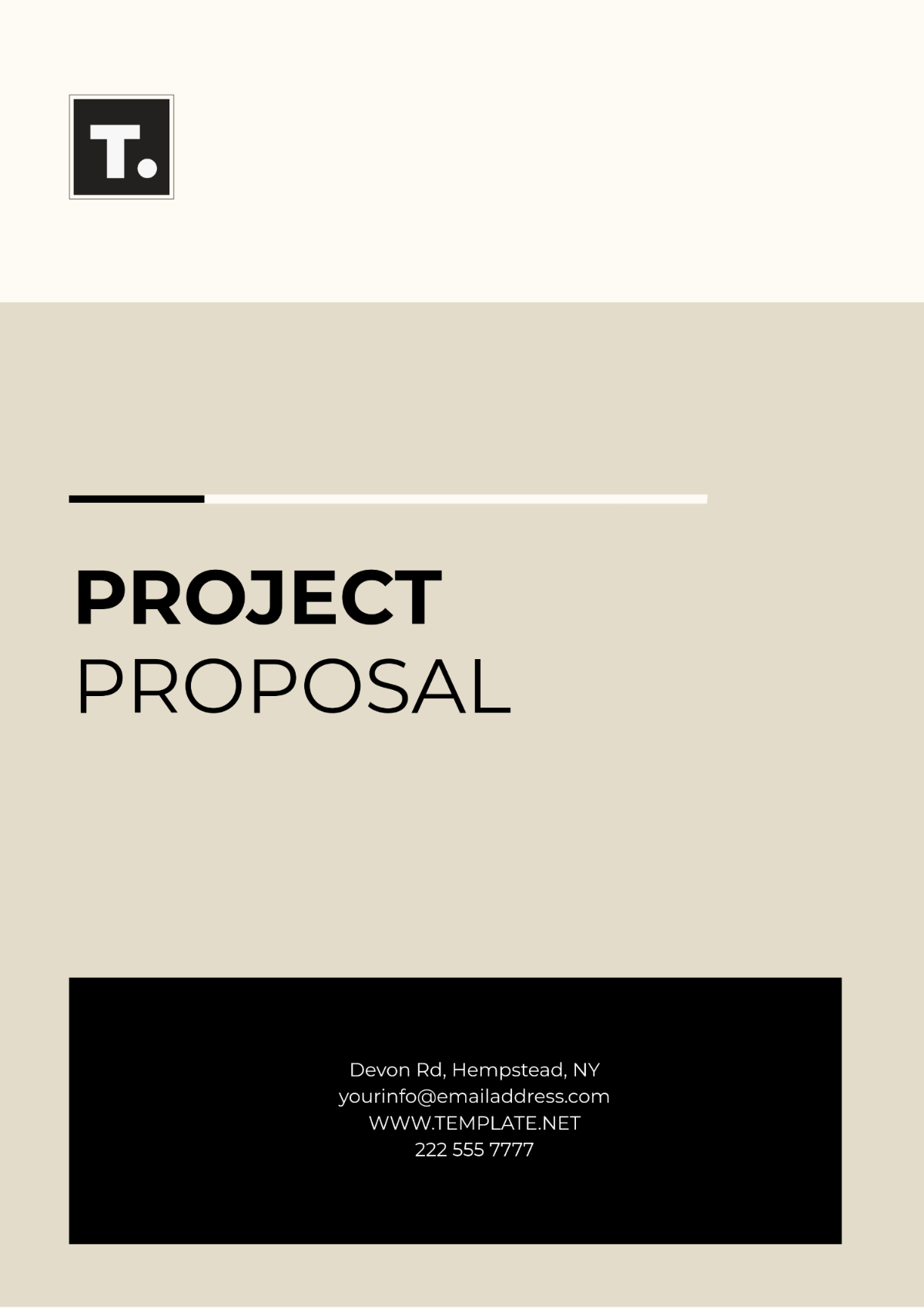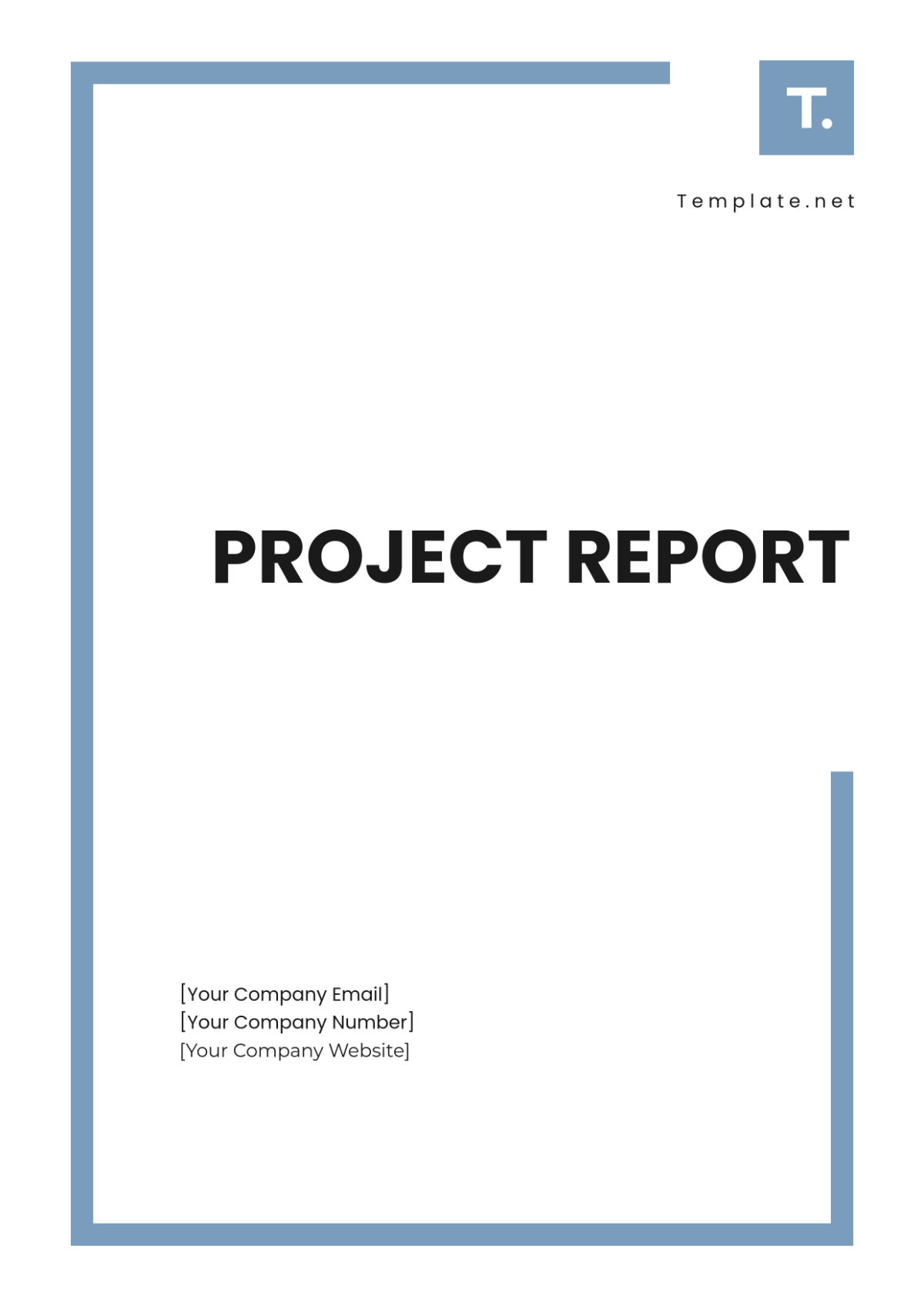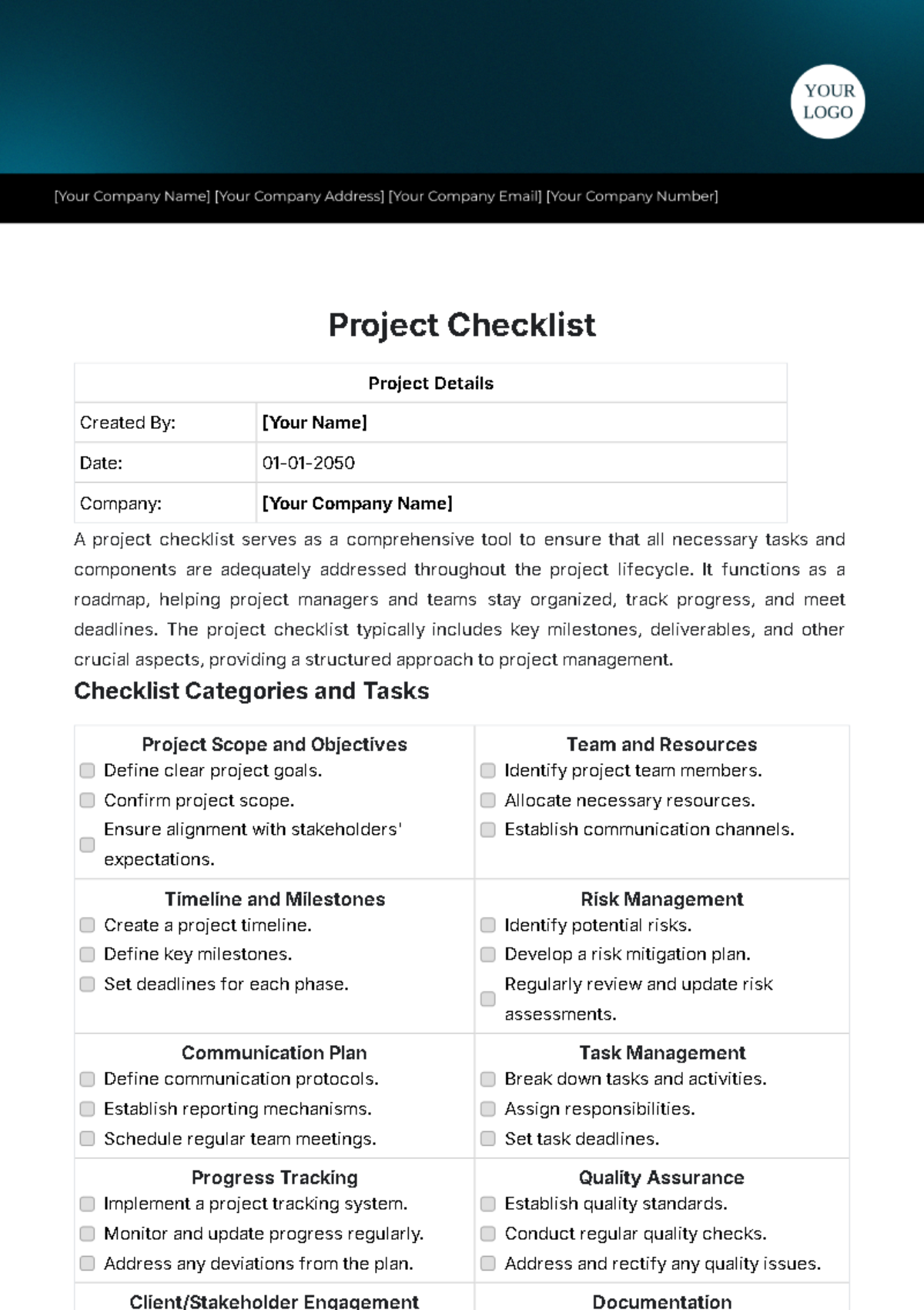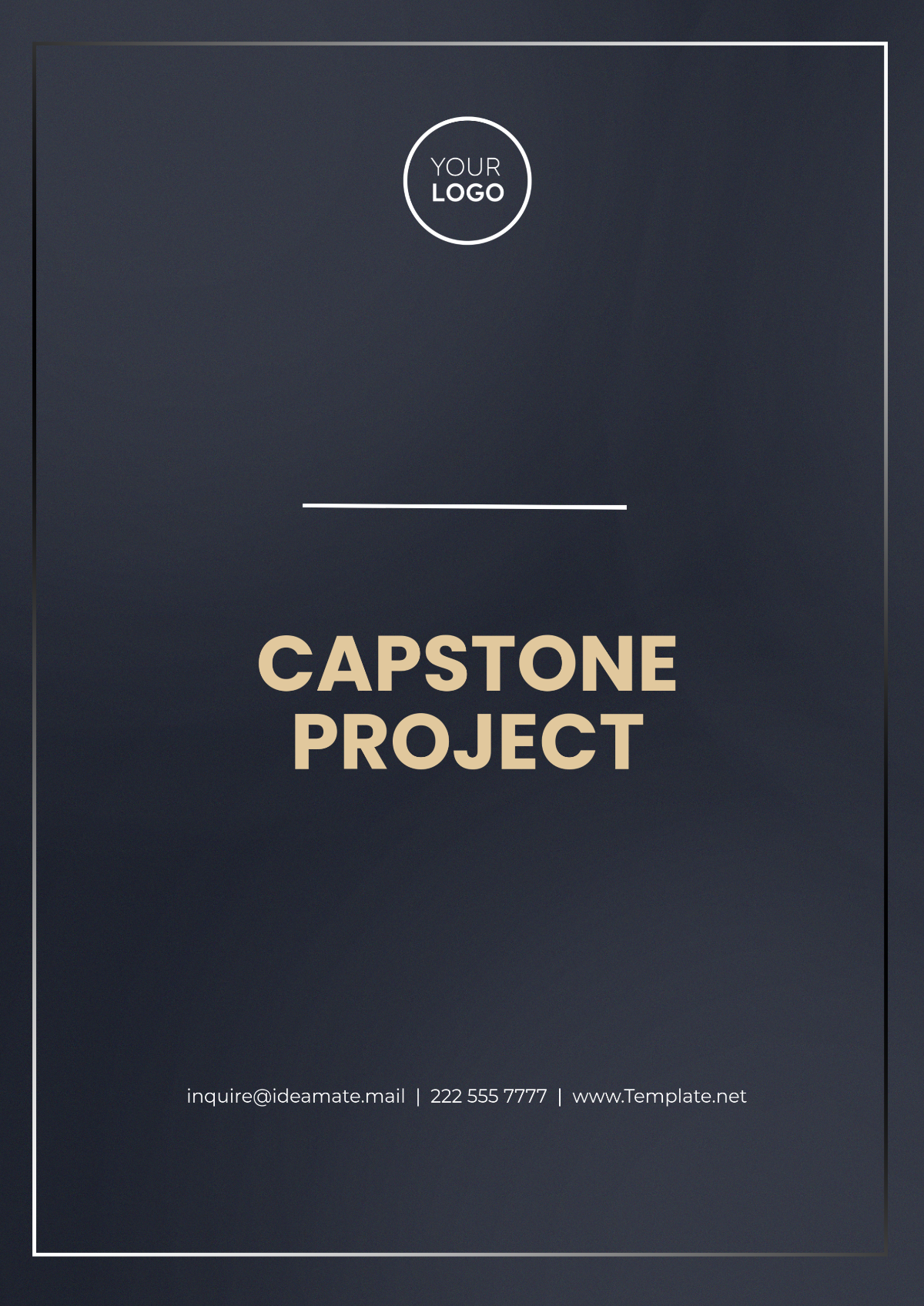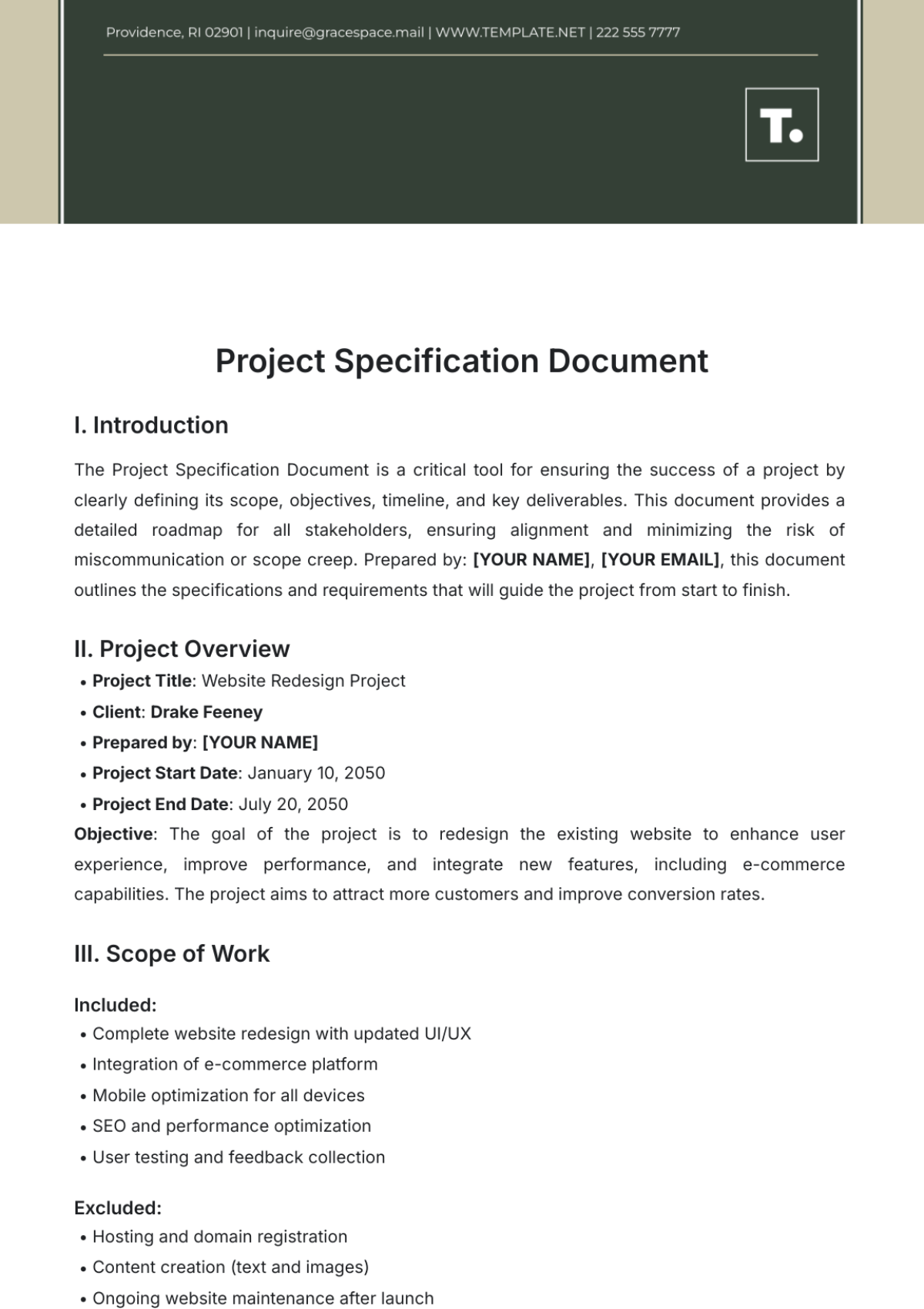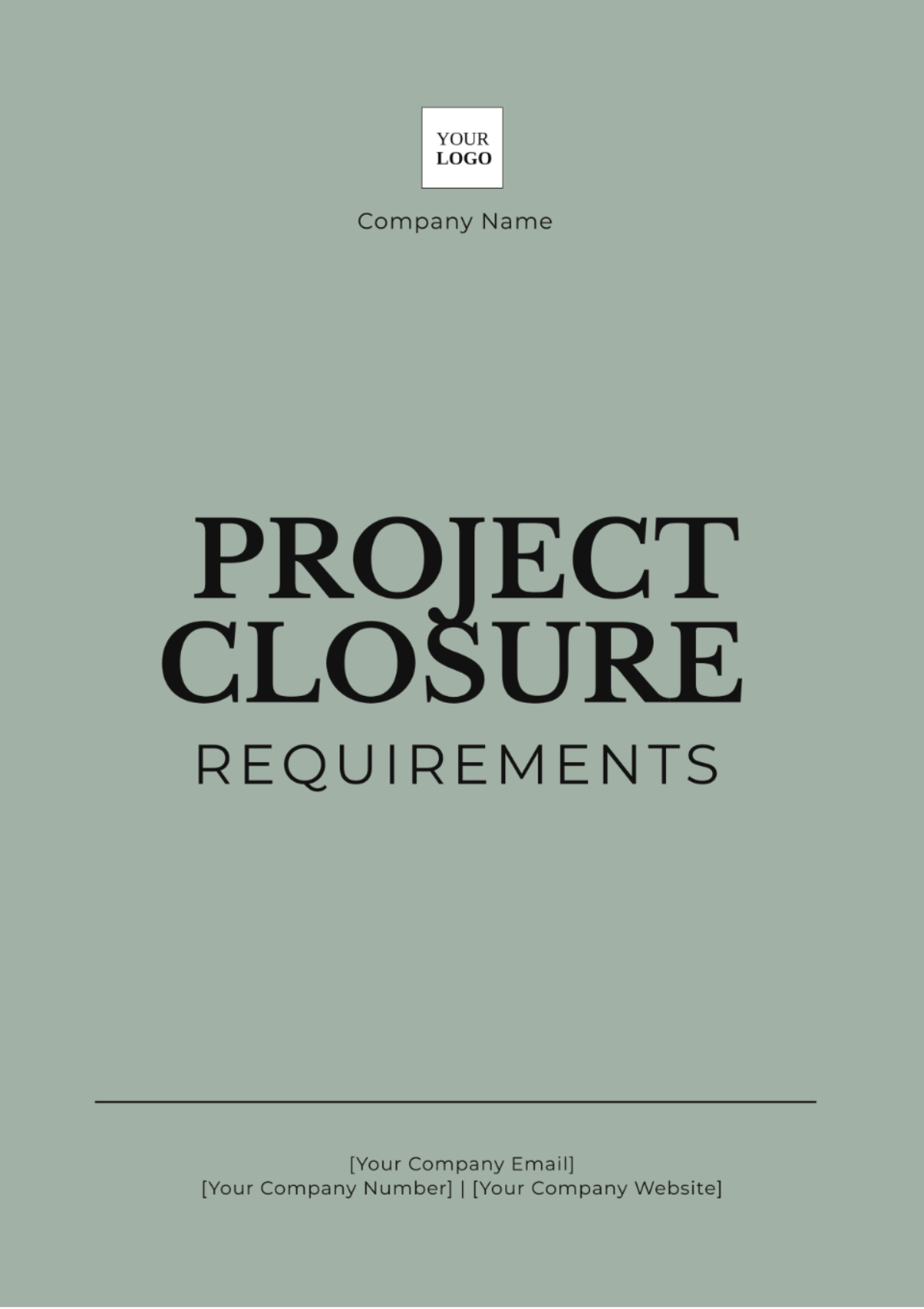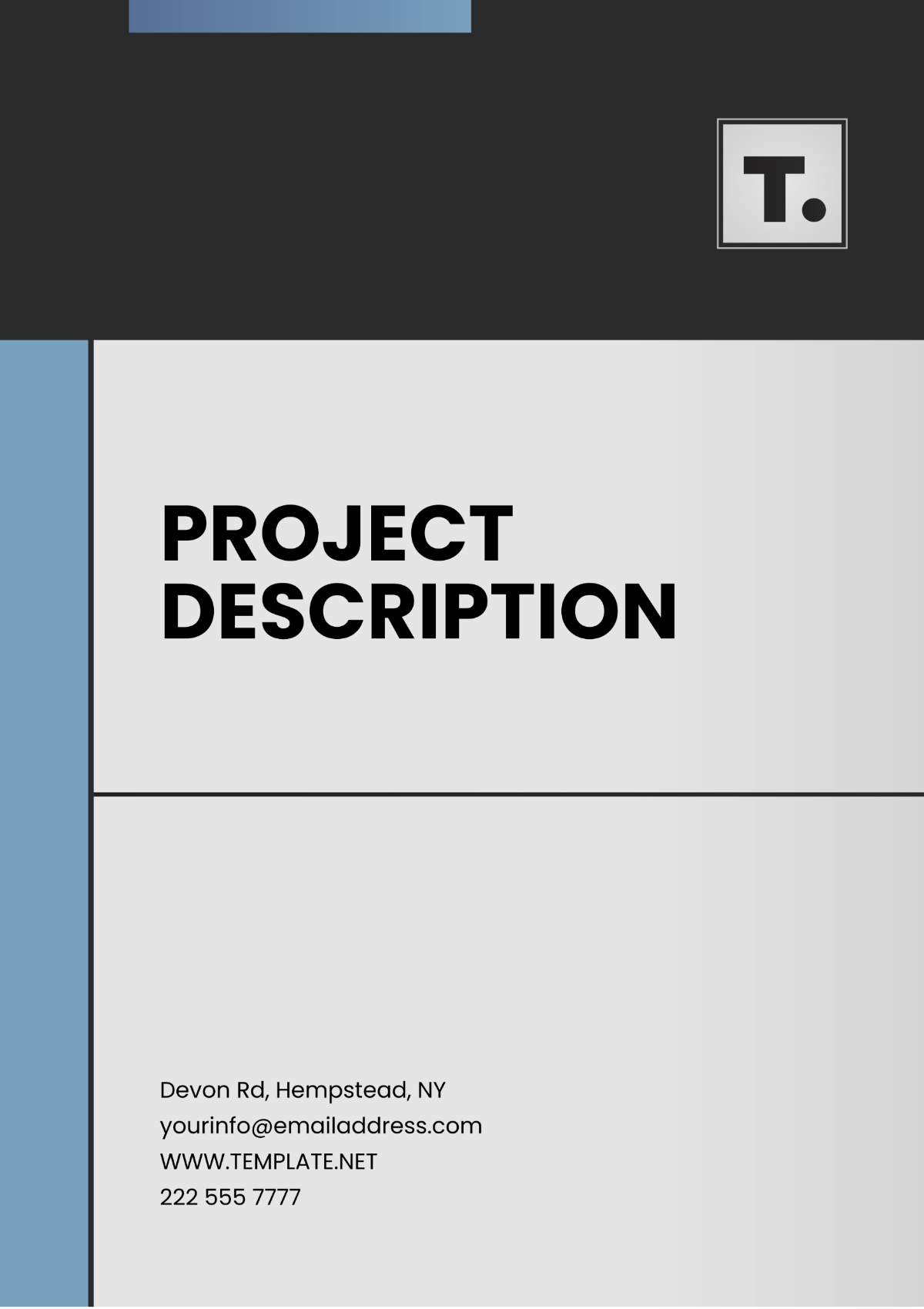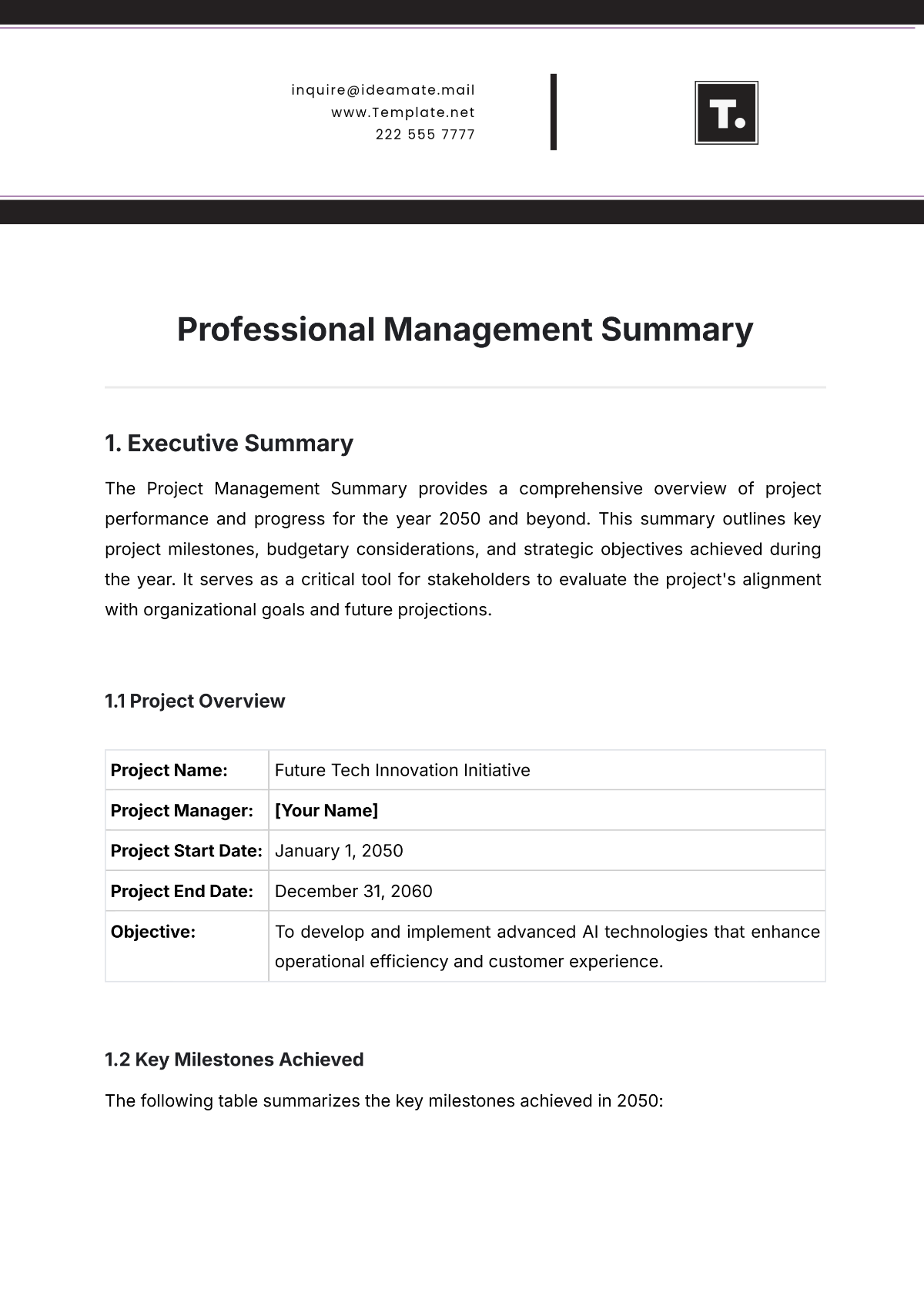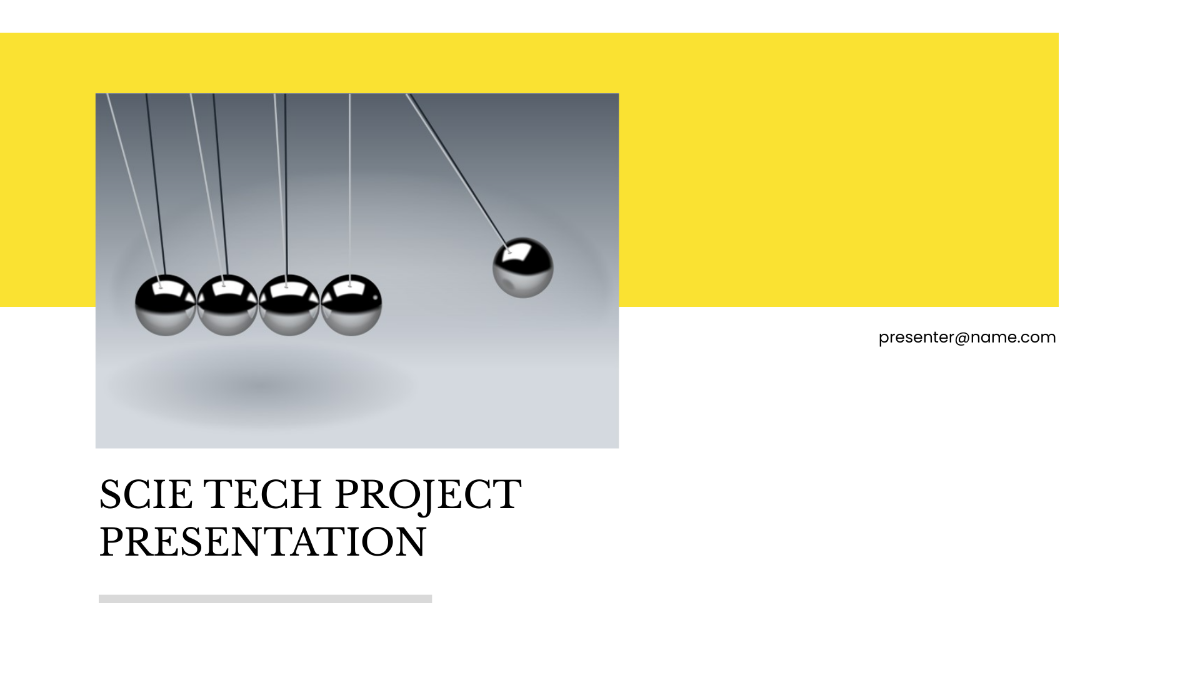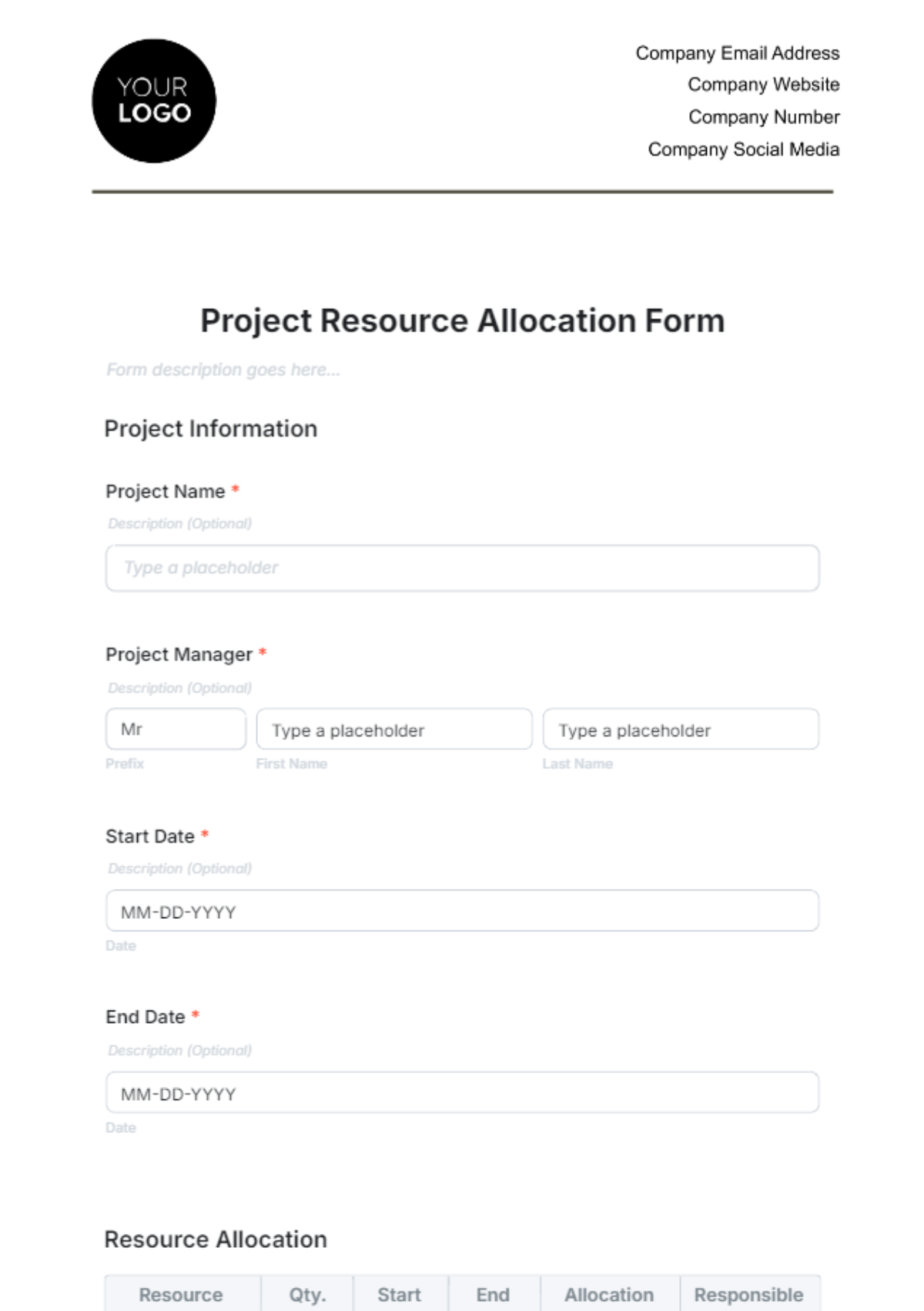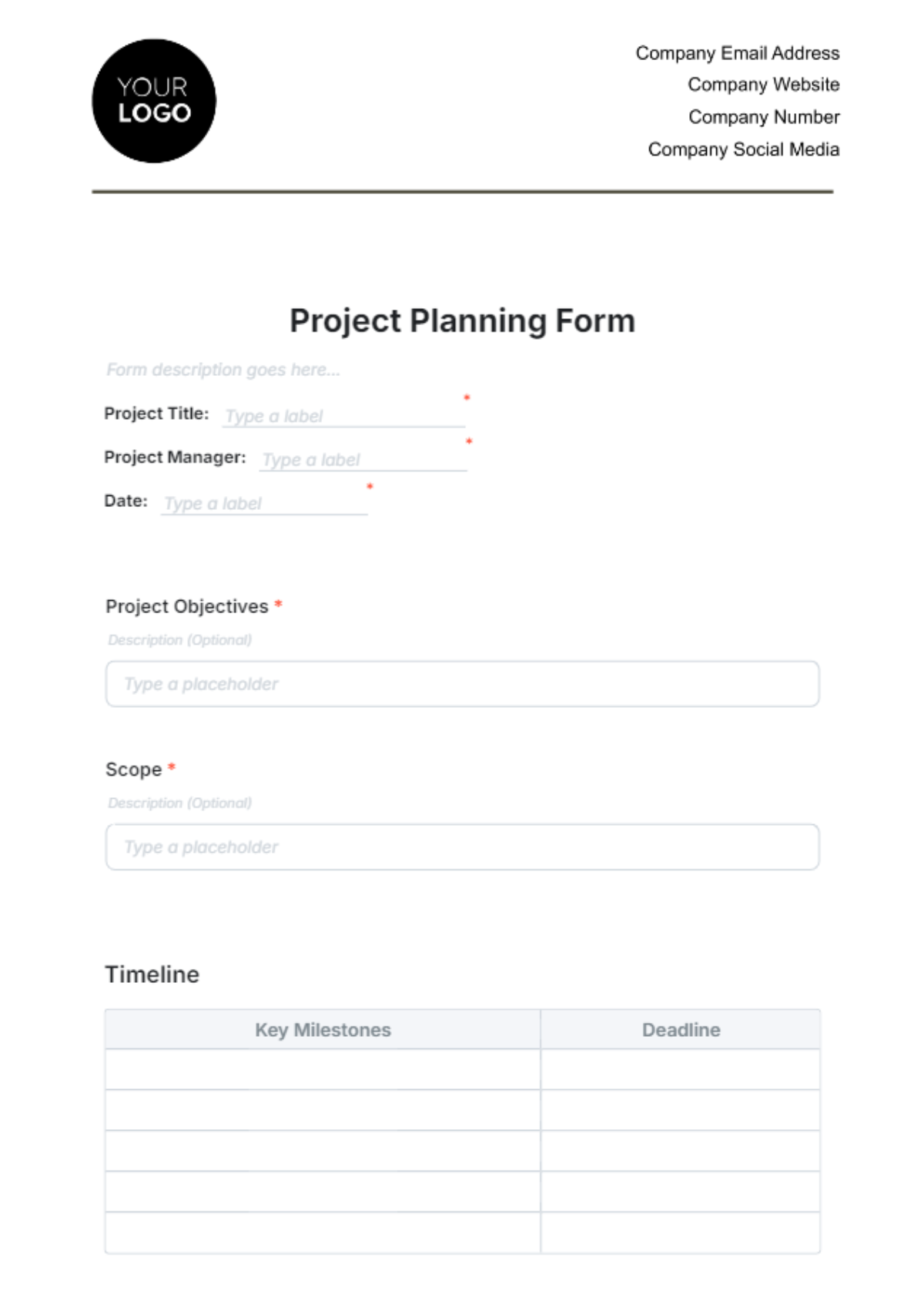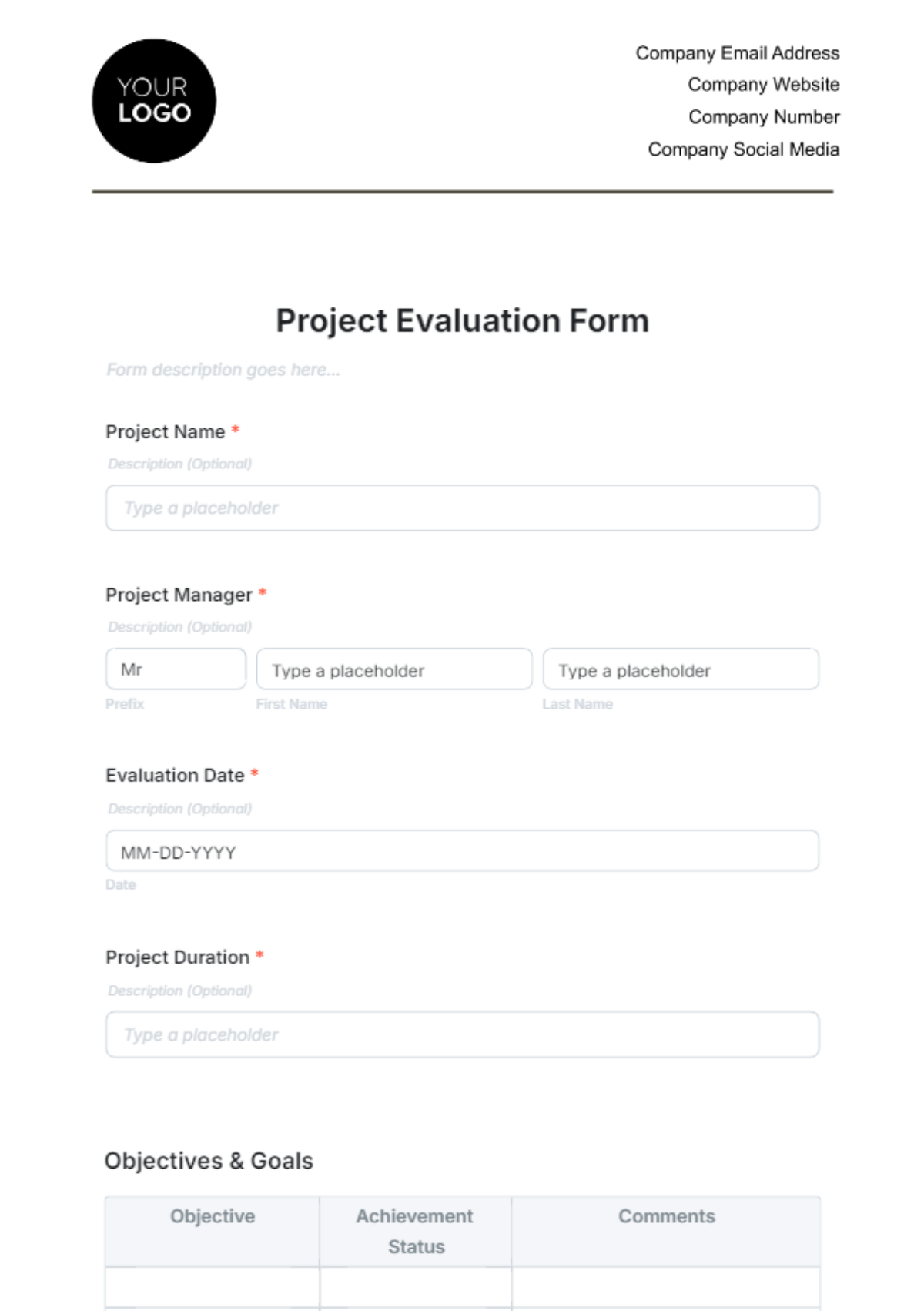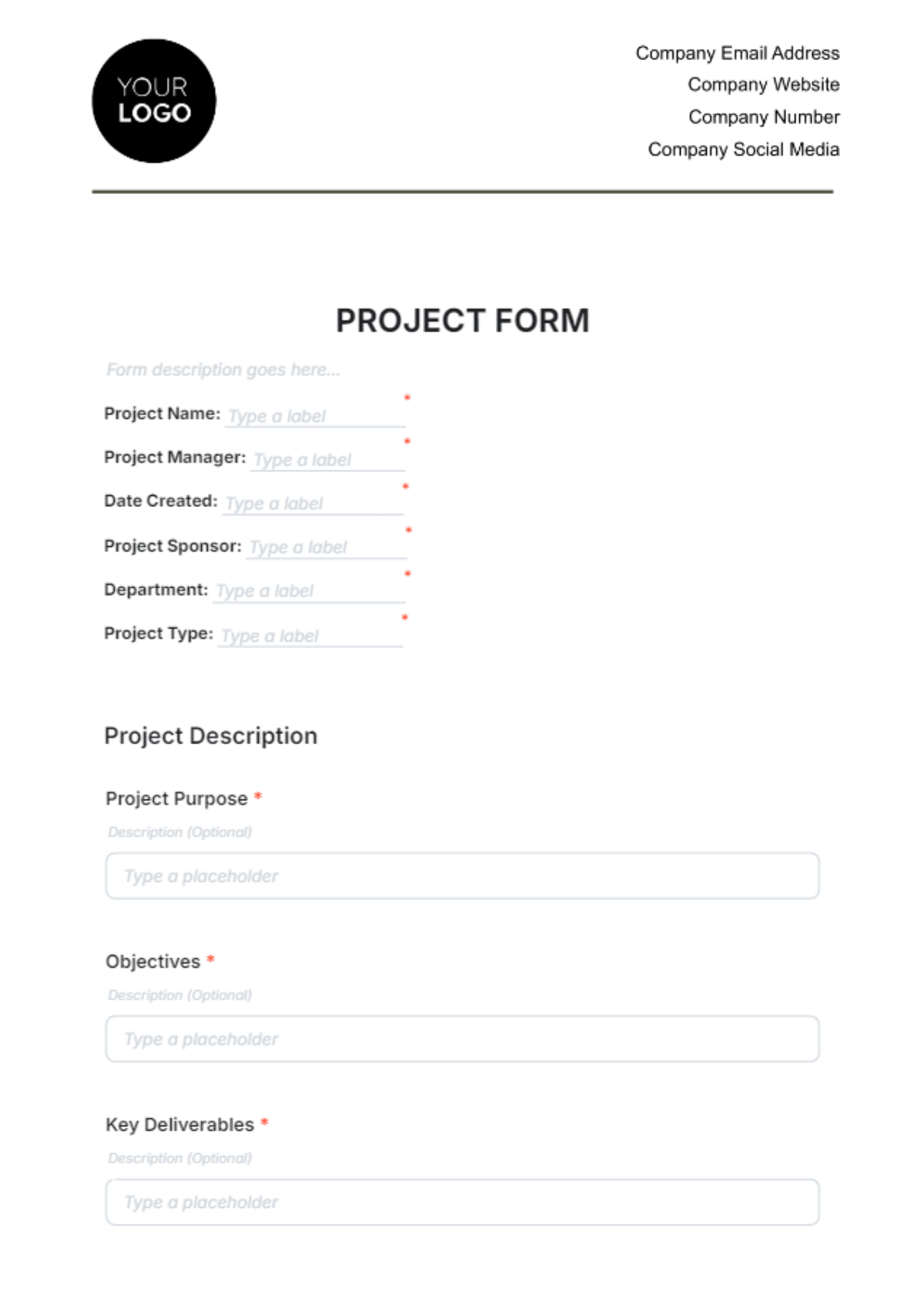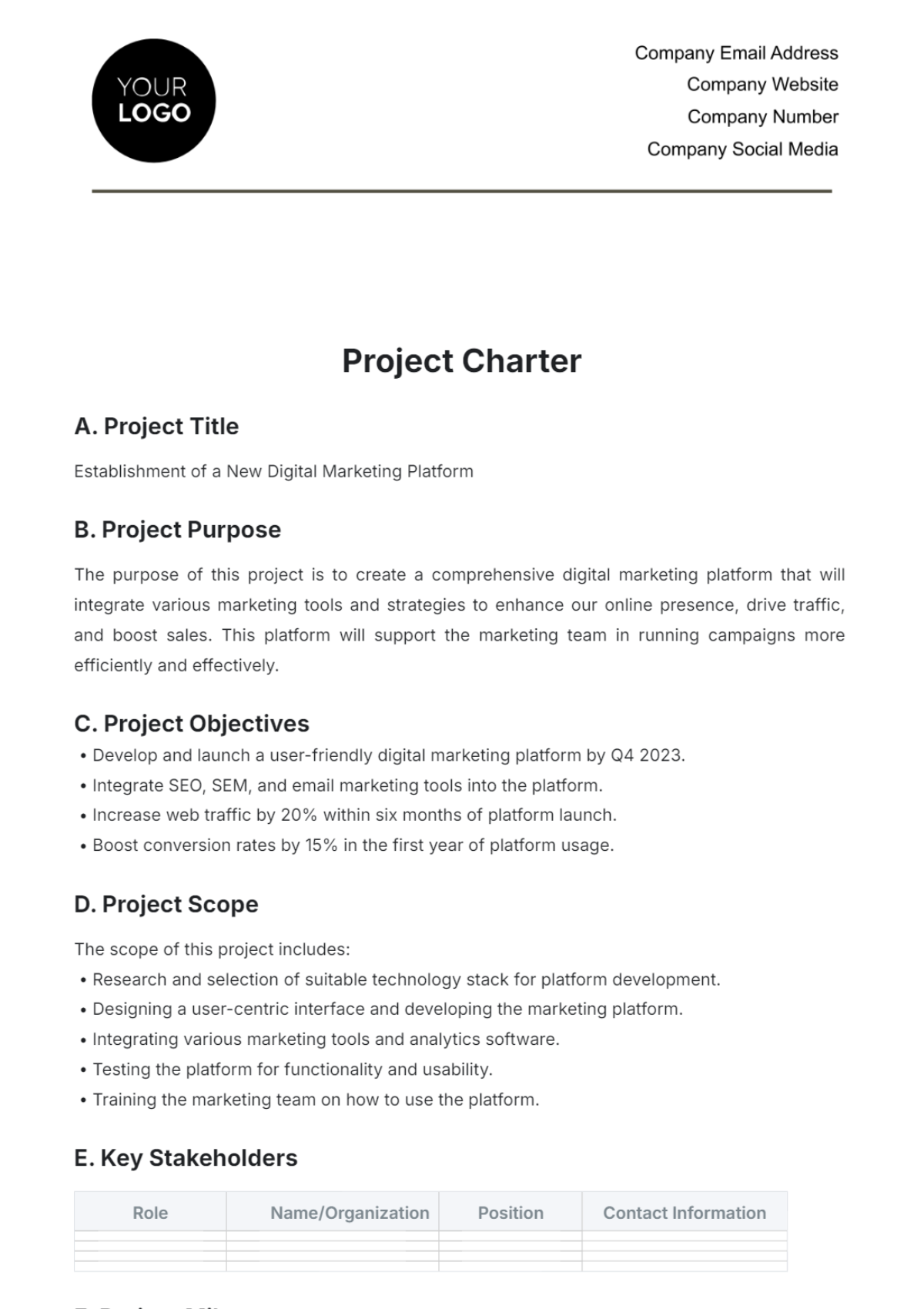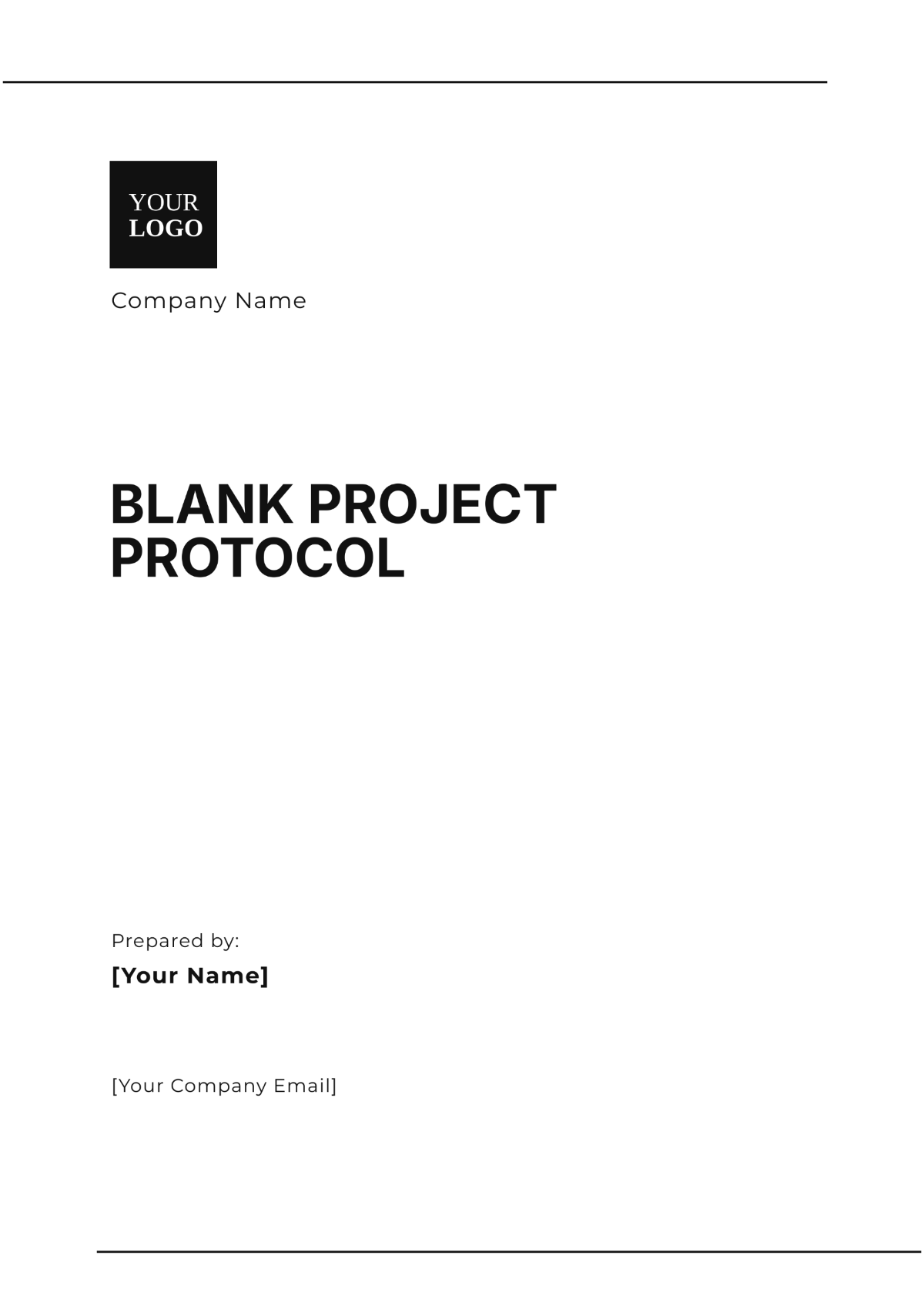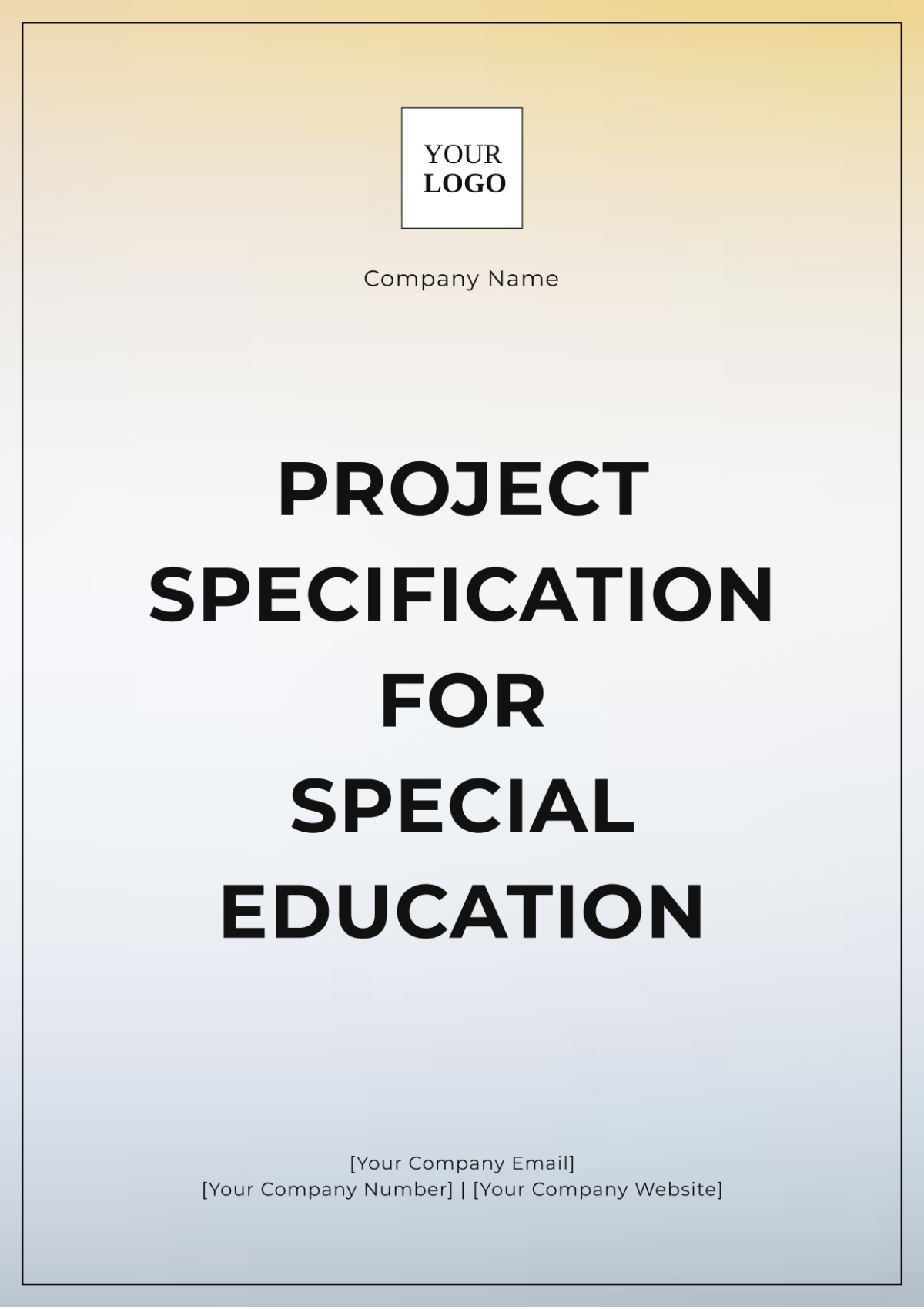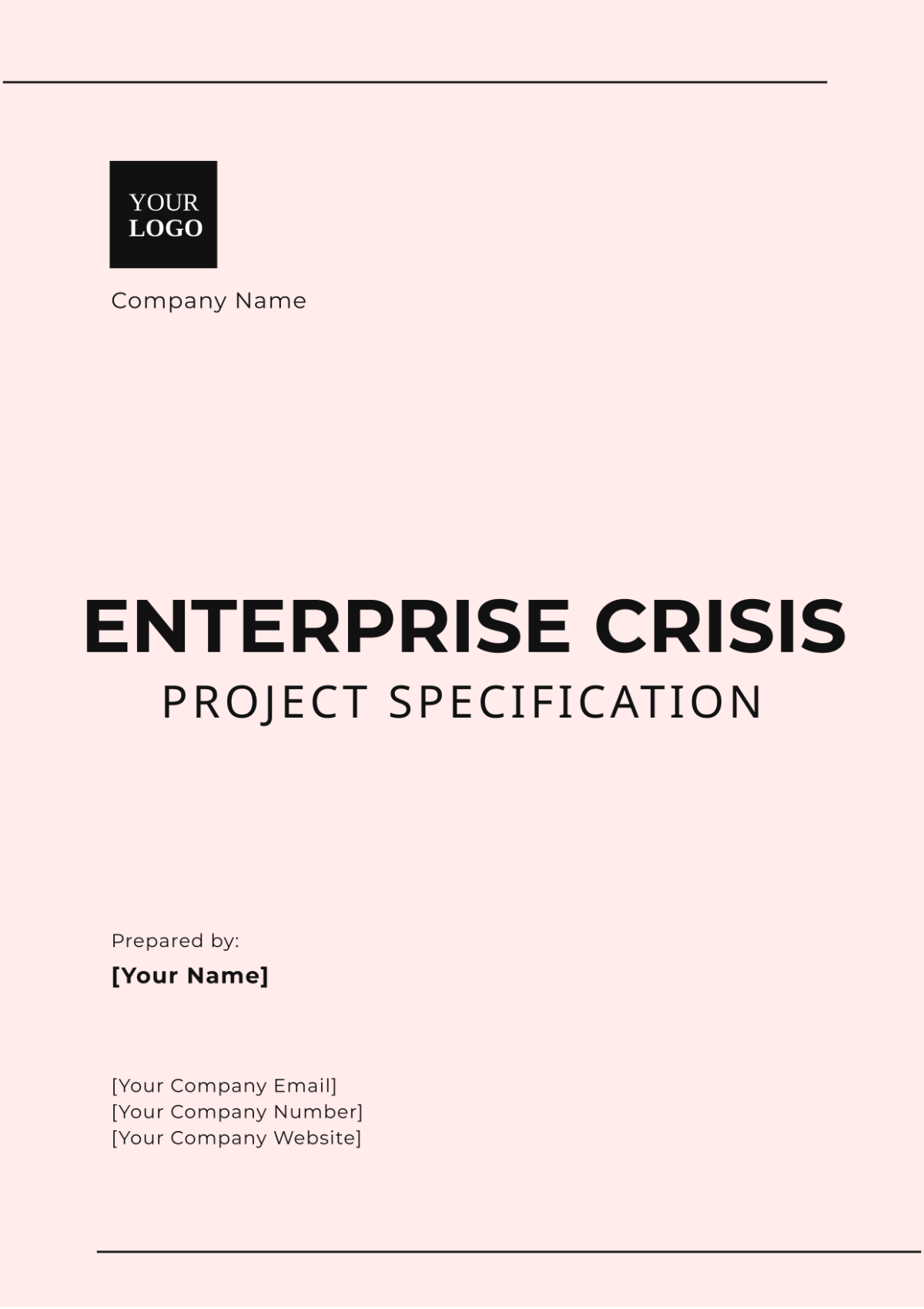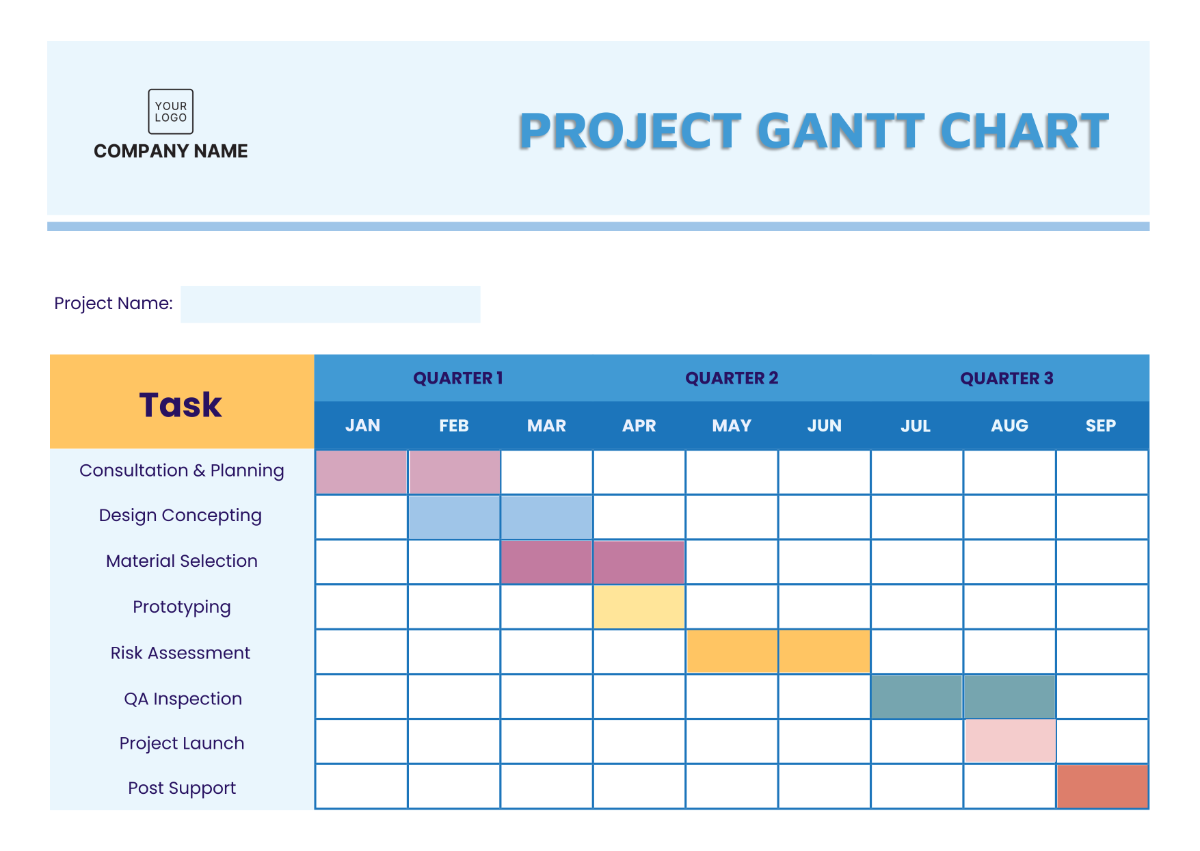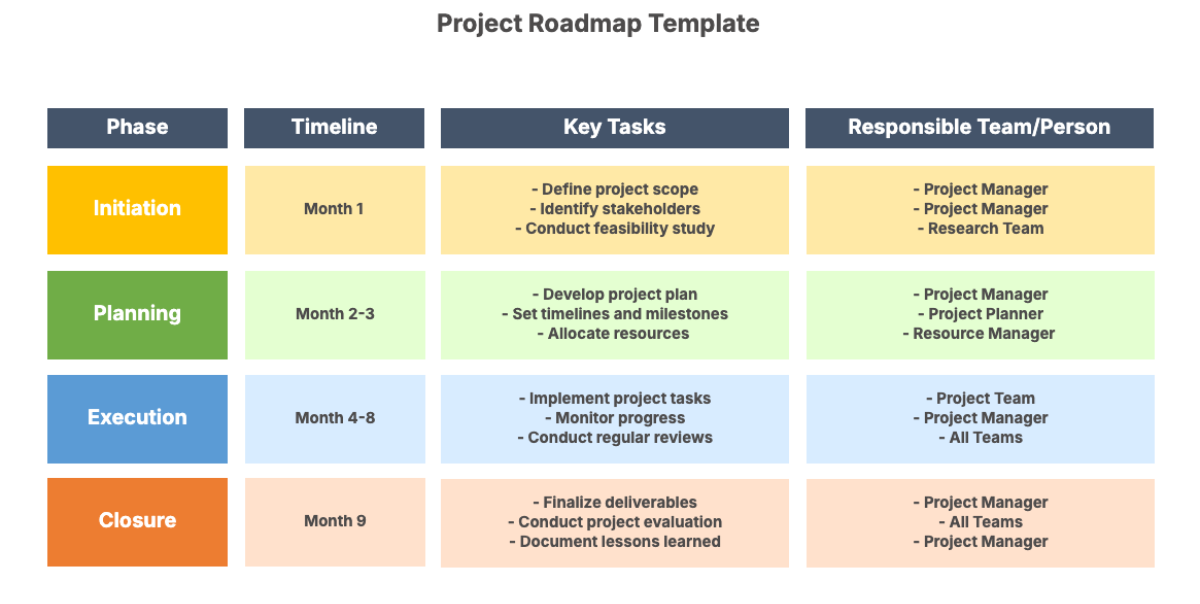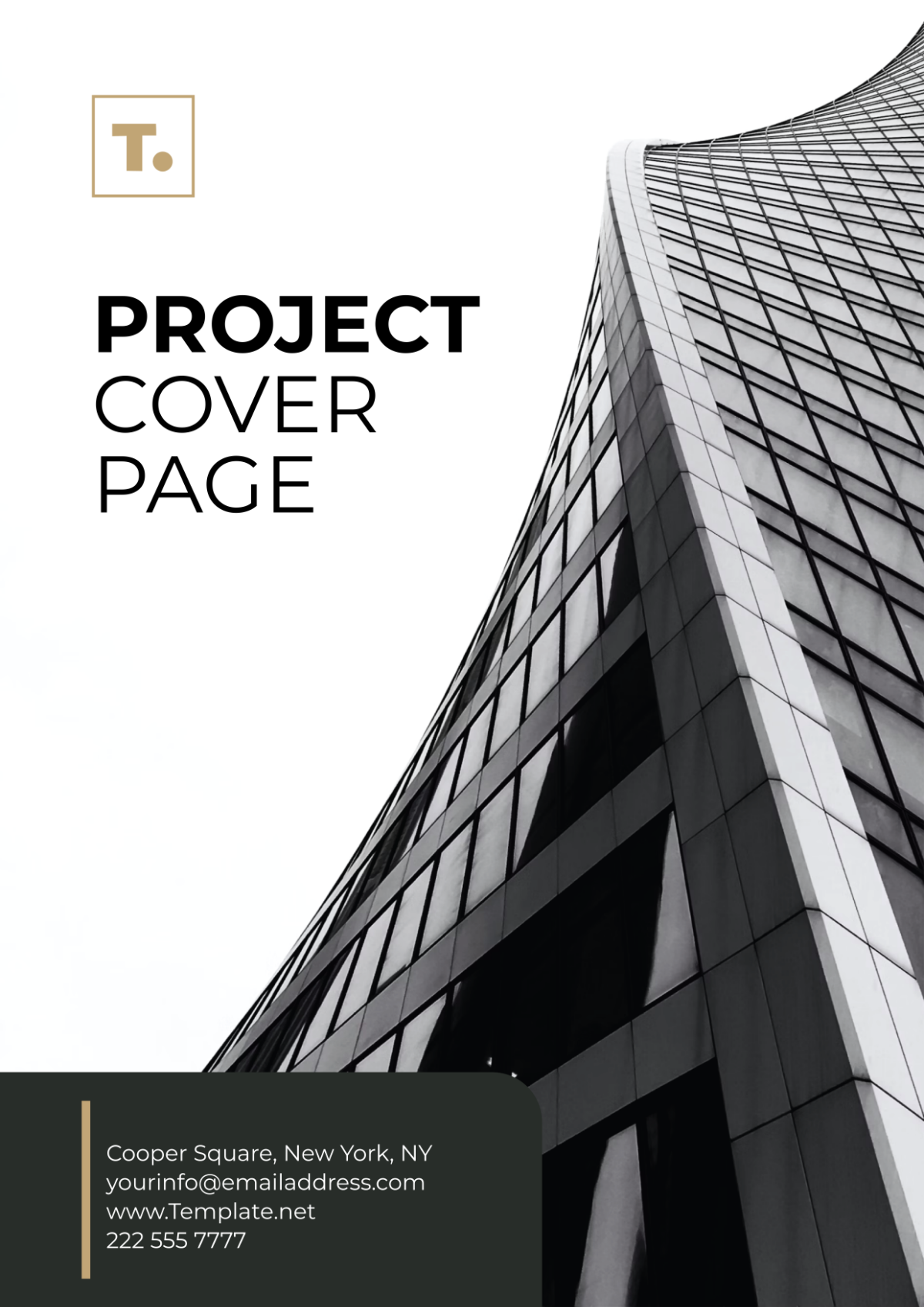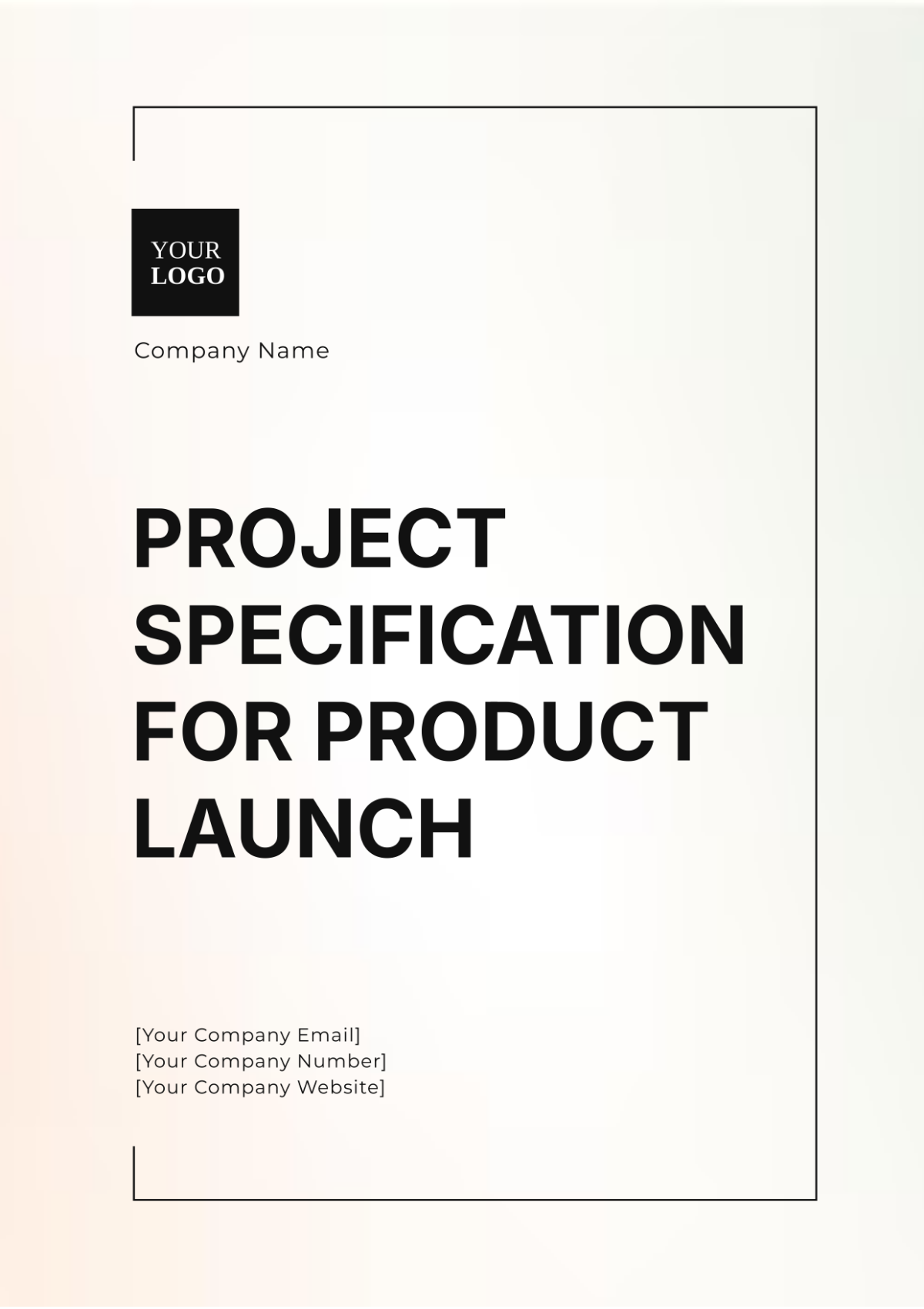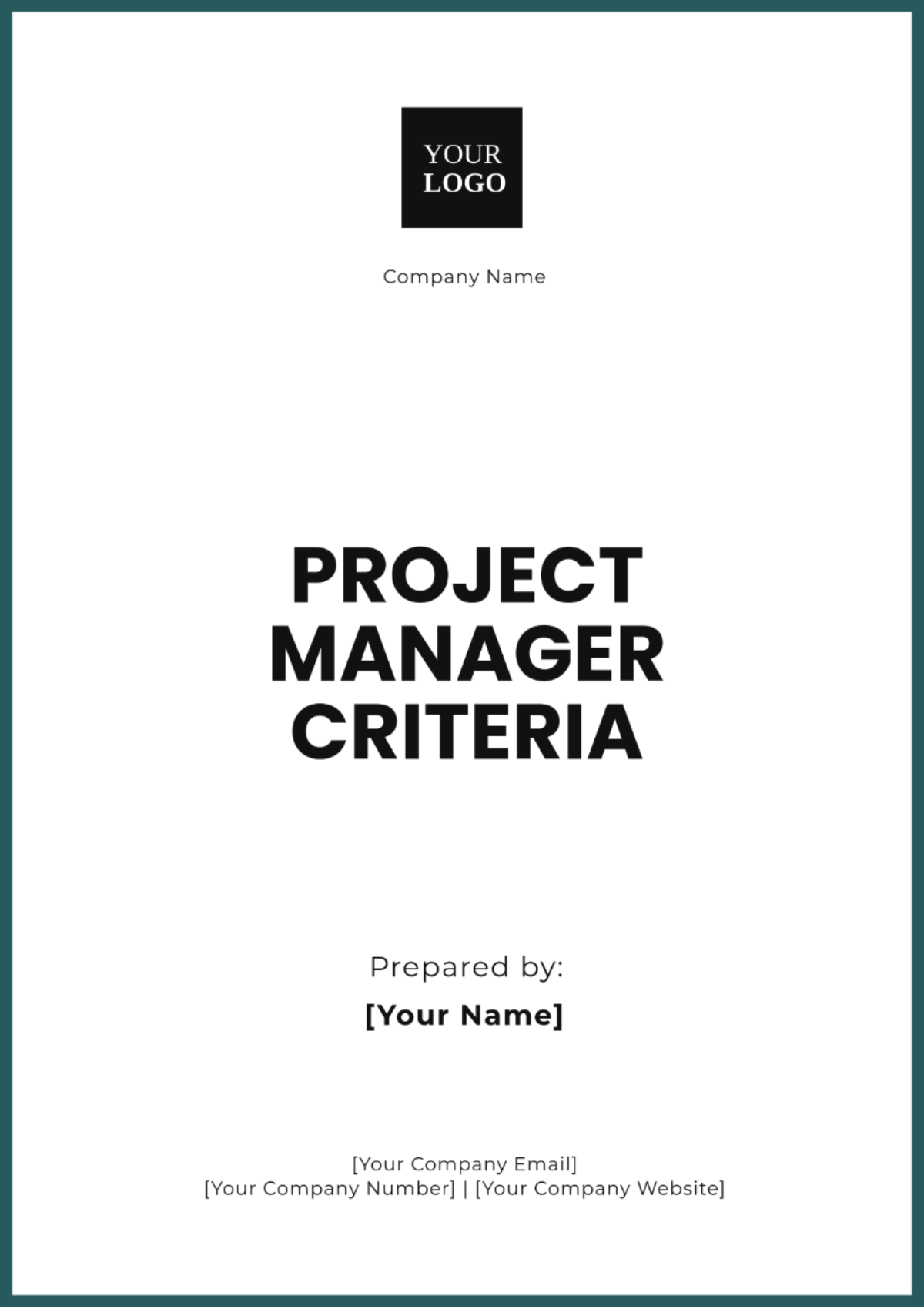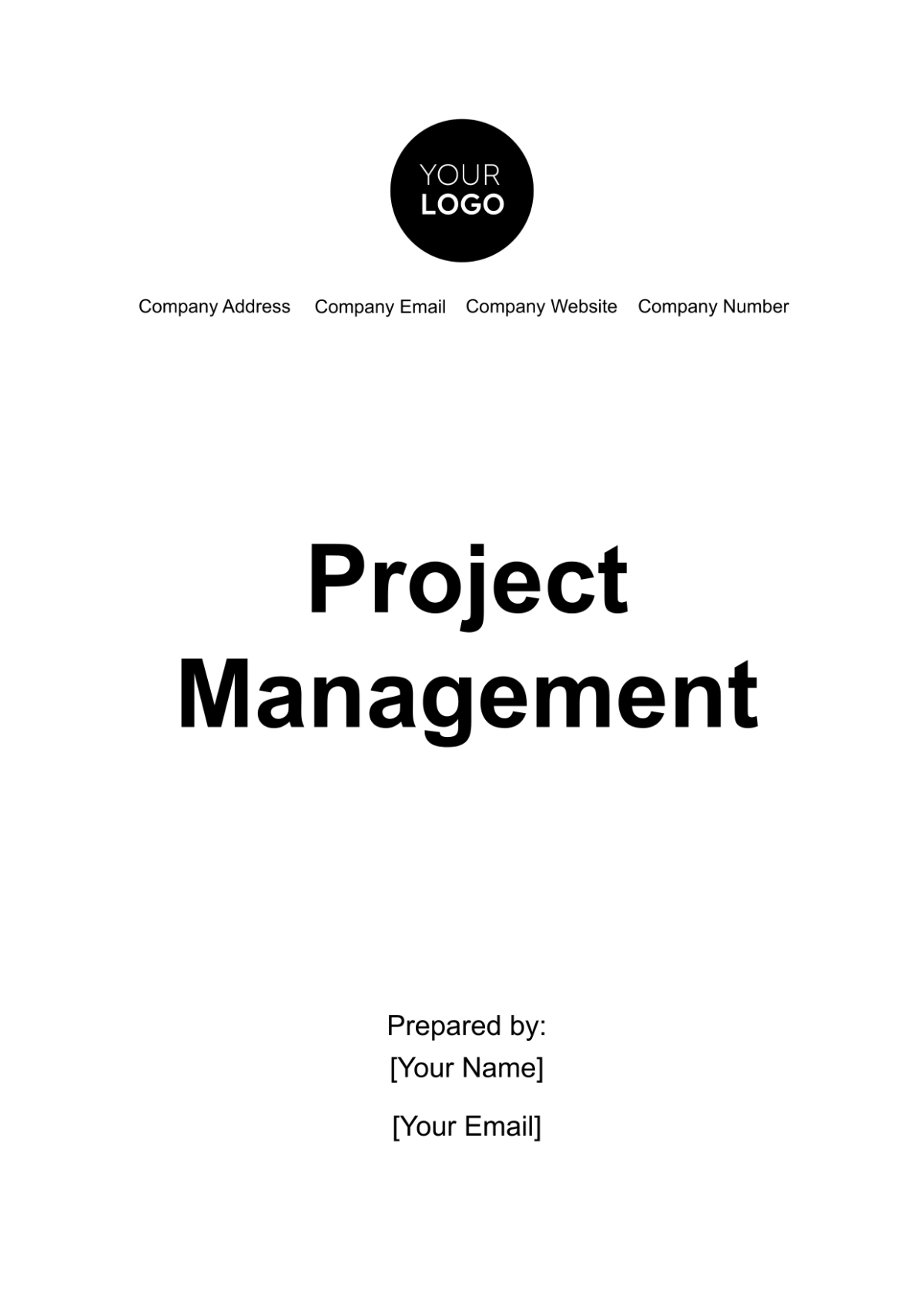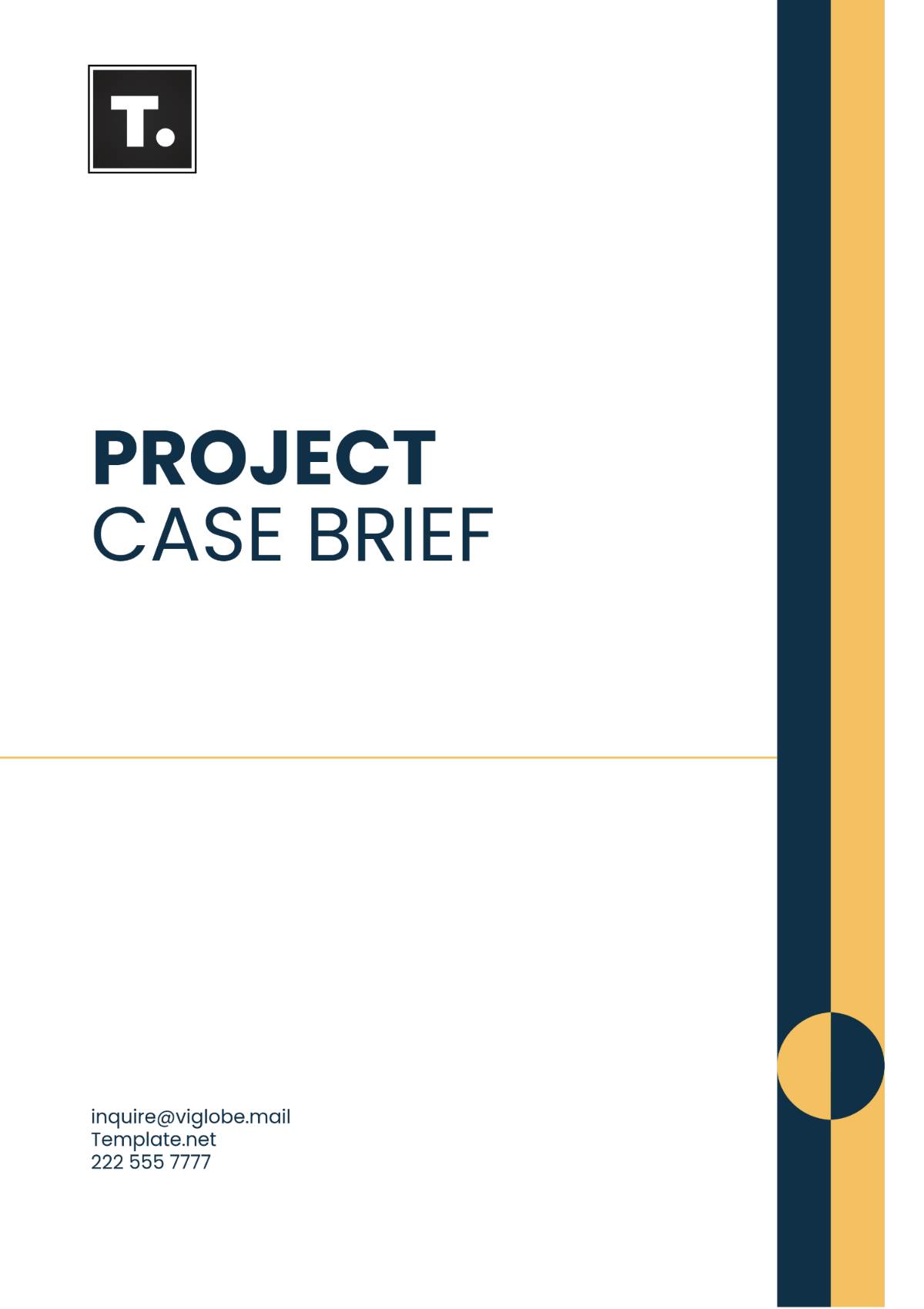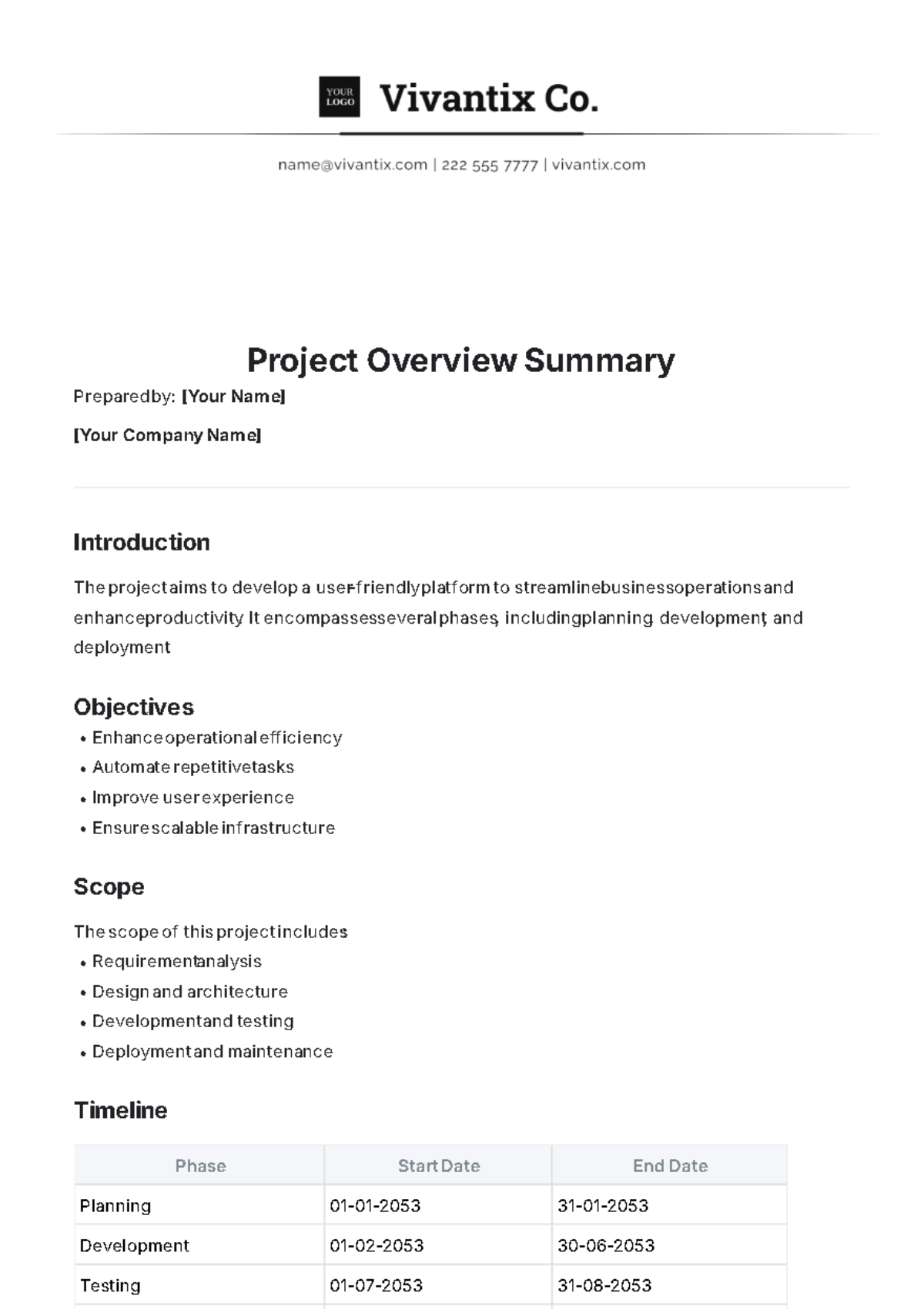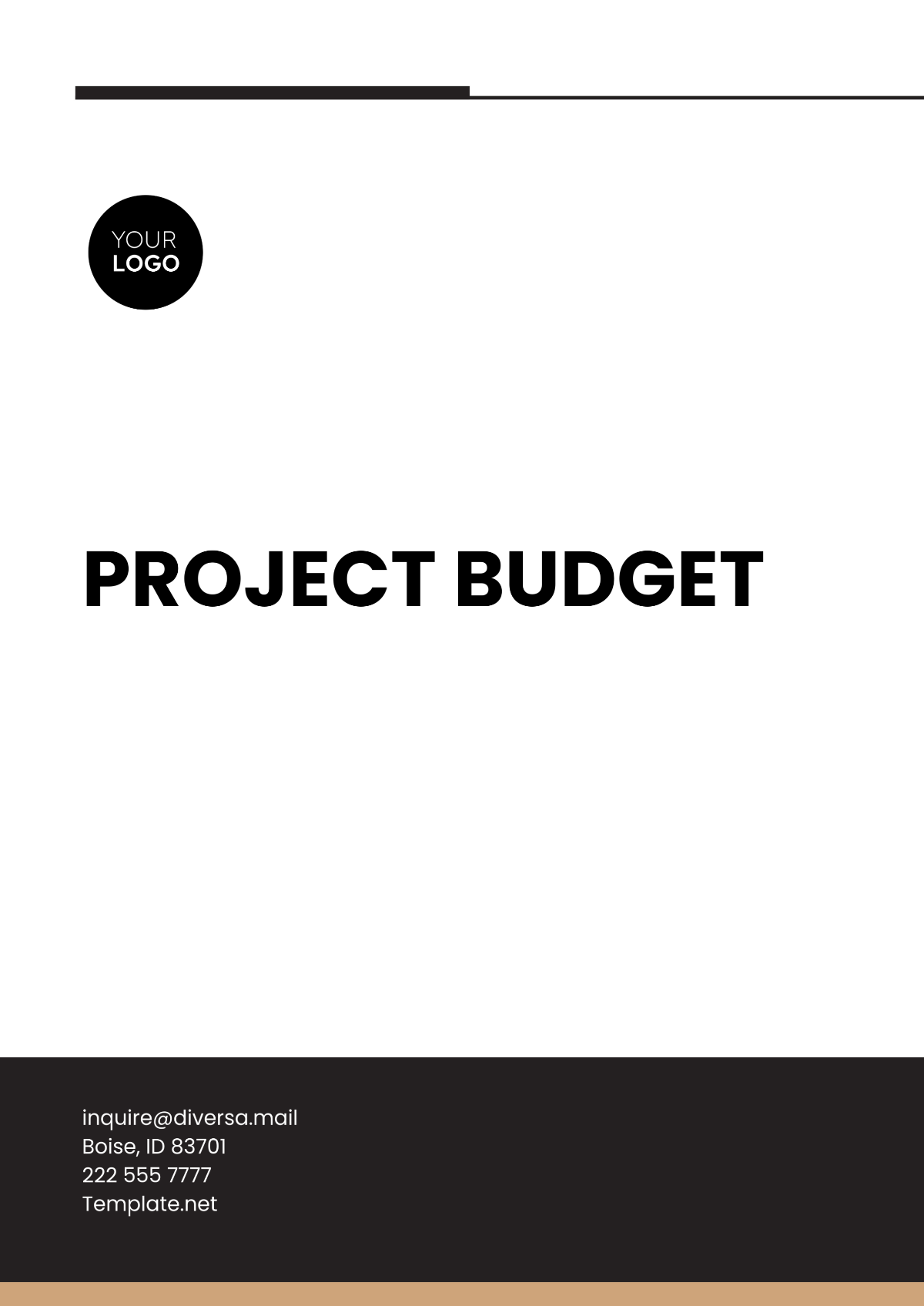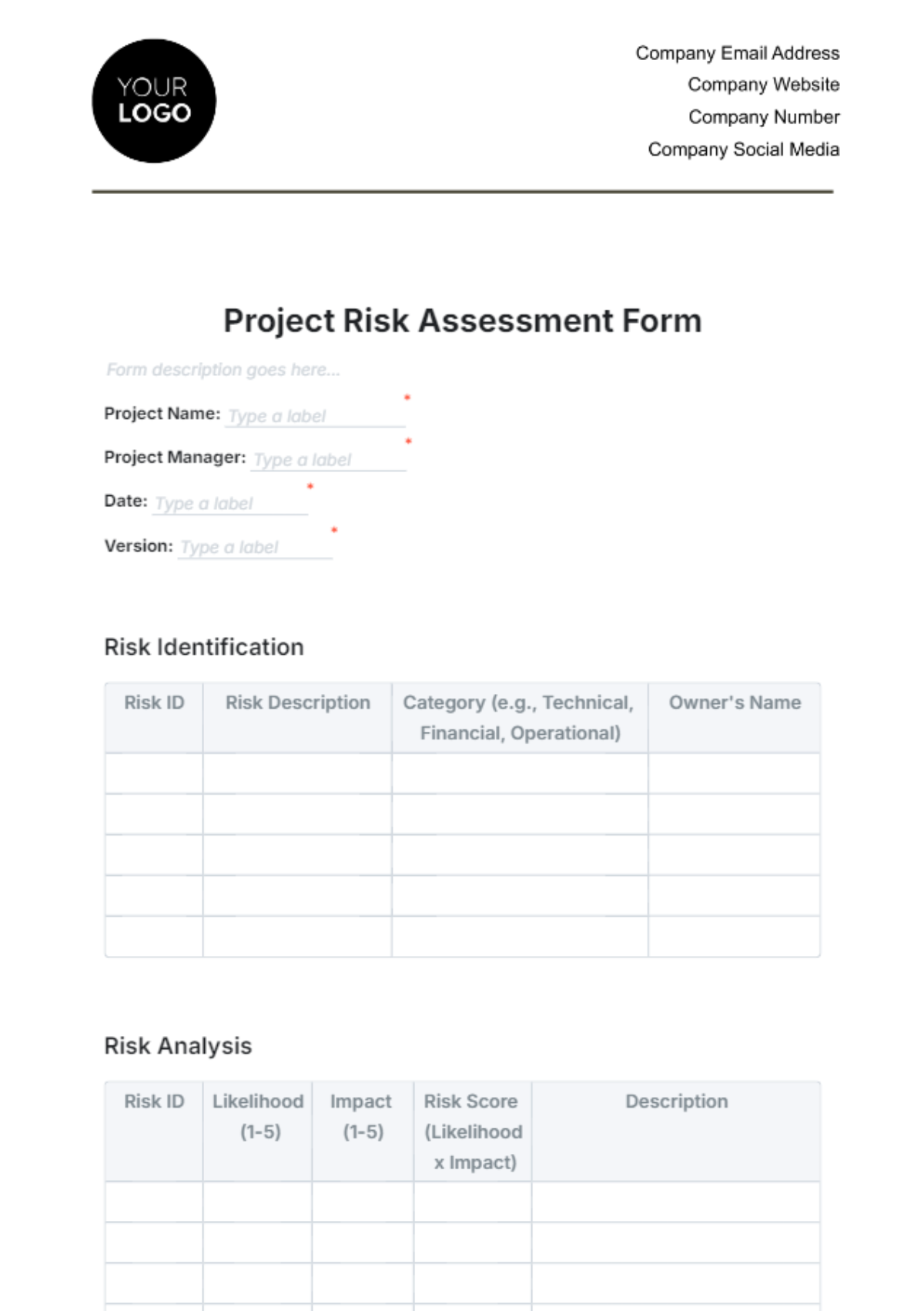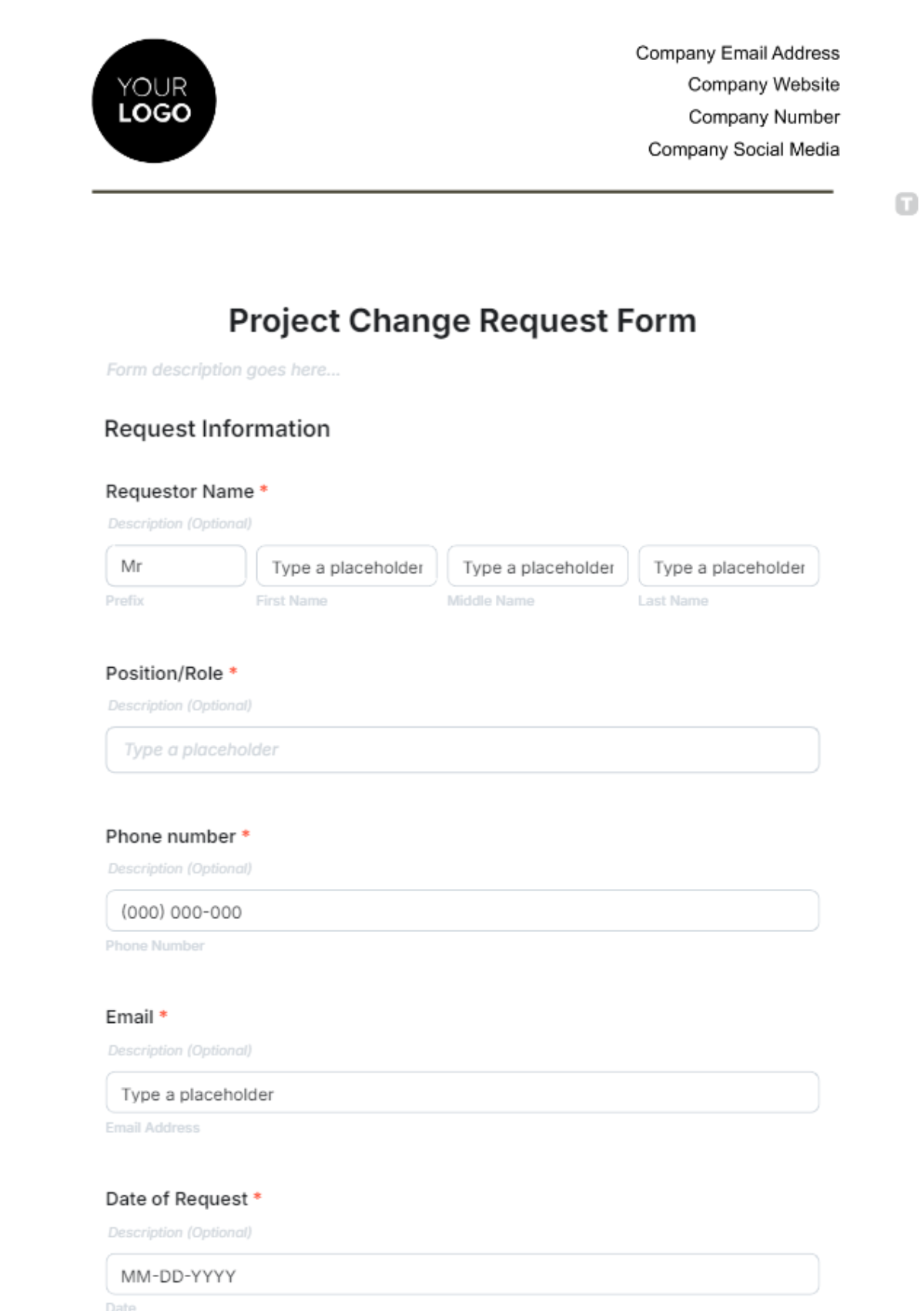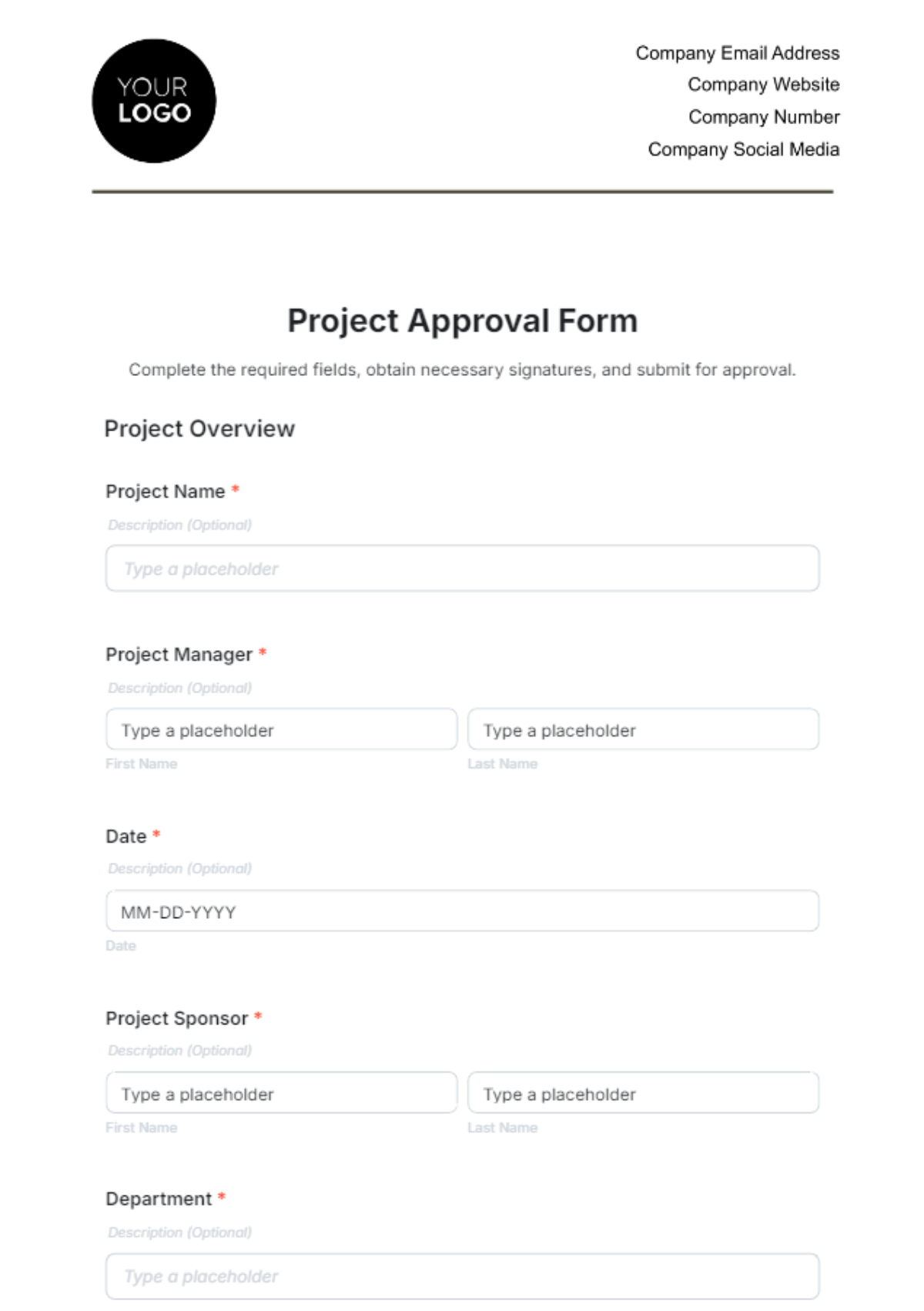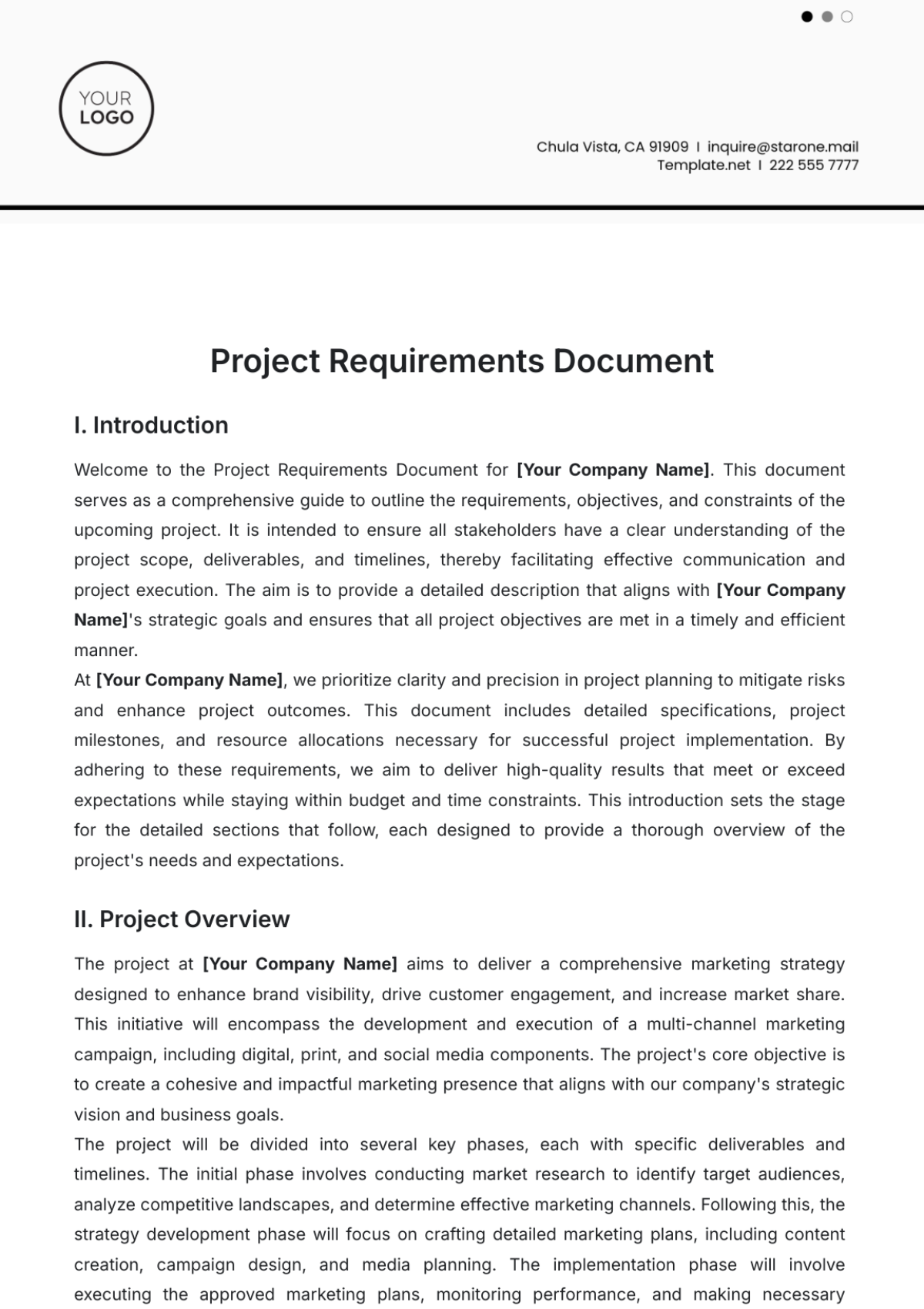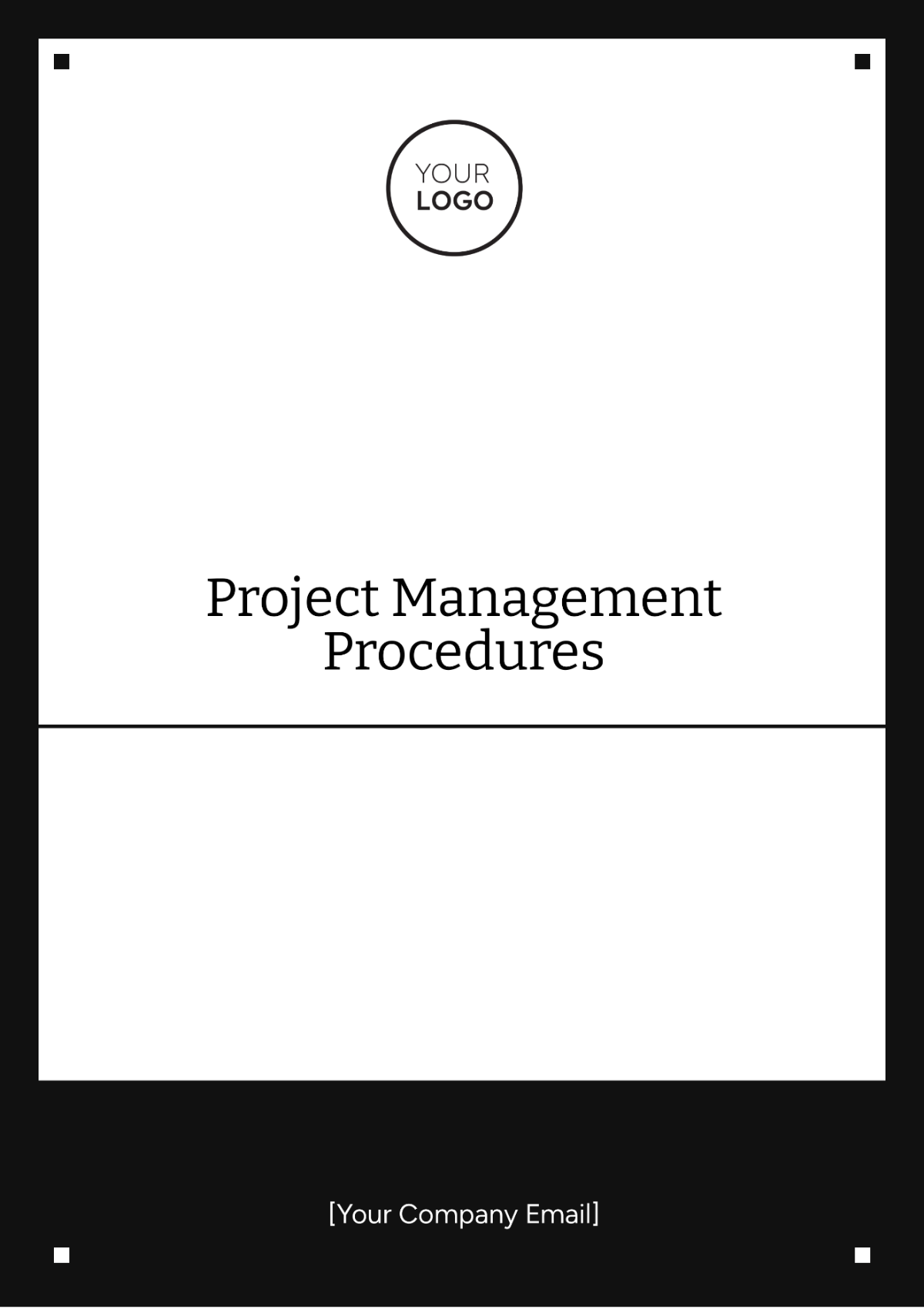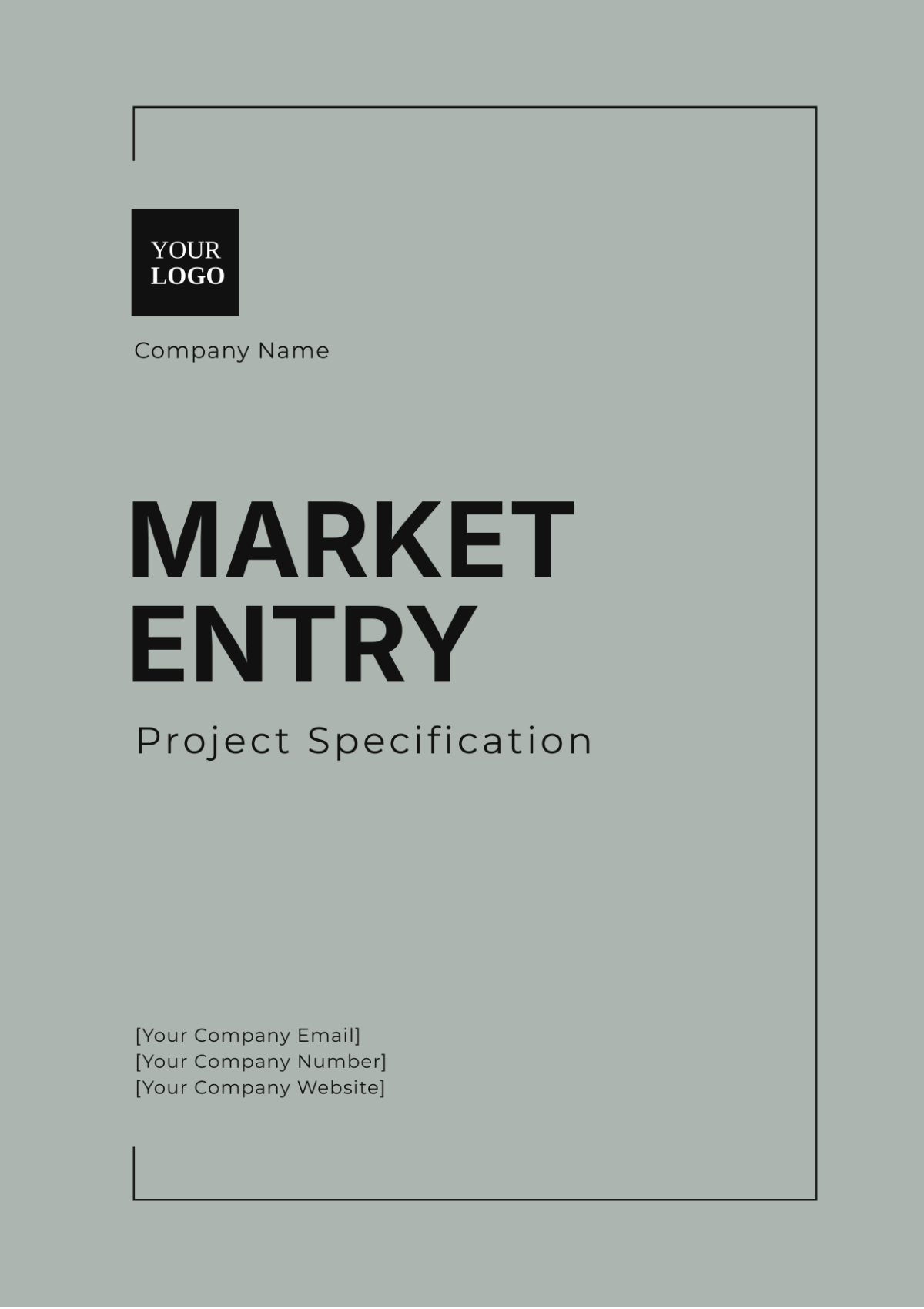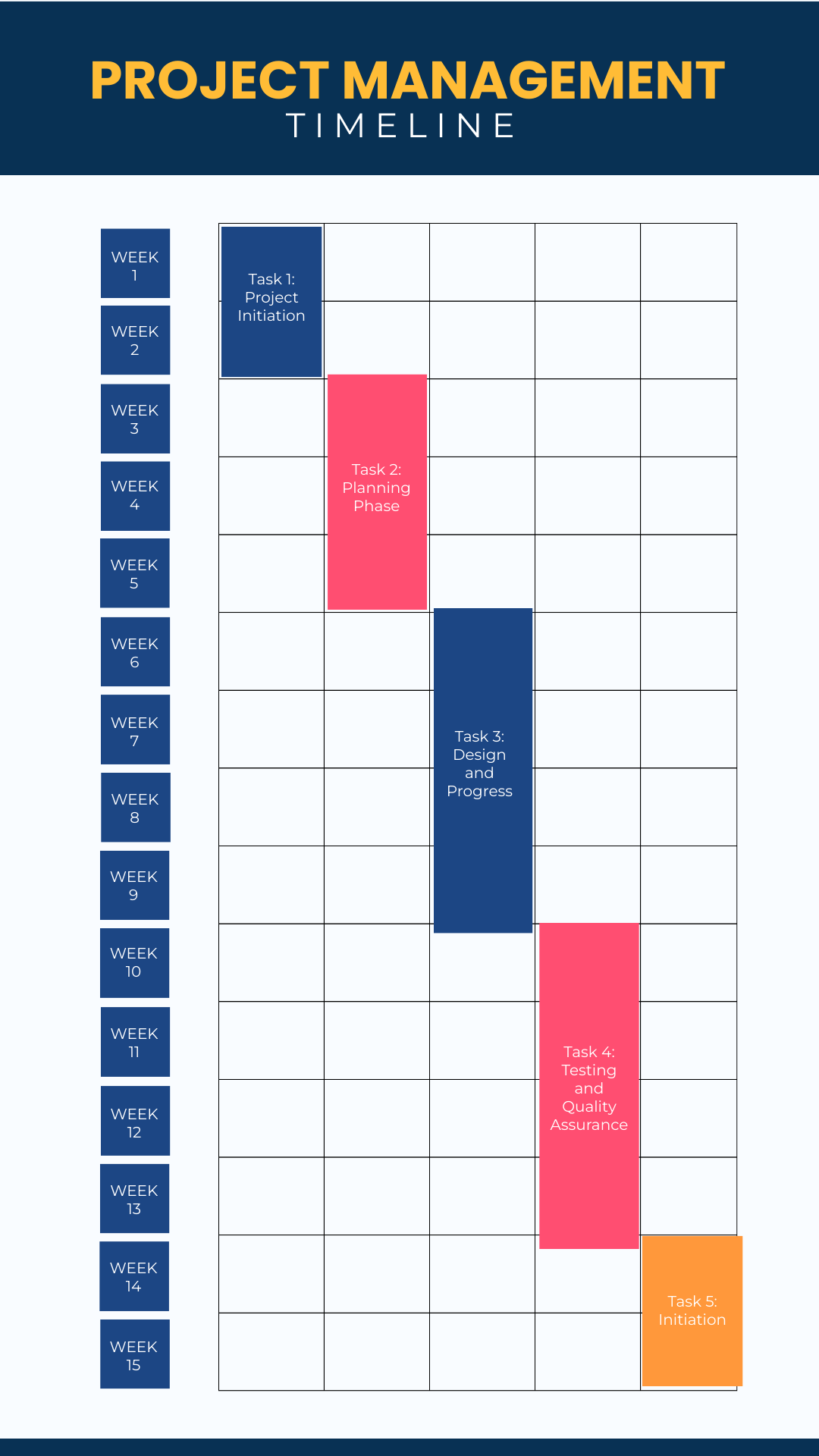Project Management Requirements
I. Project Objectives
Strategic Goals
The primary objectives of the project include:
Objective 1: Achieve a 15% increase in operational efficiency by the end of Q4 2050.
Objective 2: Implement a new customer relationship management (CRM) system by mid-2050 to enhance customer satisfaction.
Objective 3: Reduce project delivery time by 10% through improved project management methodologies.
Deliverables
The project deliverables include:
Deliverable | Description | Deadline |
|---|---|---|
Deliverable 1 | Detailed project plan | January 15, 2050 |
Deliverable 2 | Completed CRM system | June 30, 2050 |
Deliverable 3 | Efficiency report | December 15, 2050 |
II. Project Scope
In-Scope
In-Scope Activity 1: Development and deployment of the CRM system.
In-Scope Activity 2: Training sessions for staff on new tools and processes.
In-Scope Activity 3: Integration of new systems with existing infrastructure.
Out-of-Scope
Out-of-Scope Activity 1: Development of new software outside the CRM system.
Out-of-Scope Activity 2: Major upgrades to existing IT infrastructure.
III. Timeline
Phases and Milestones
The project is divided into the following phases:
Phase | Description | Start Date | End Date |
|---|---|---|---|
Phase 1 | Project Planning | December 1, 2049 | January 15, 2050 |
Phase 2 | CRM System Development | January 16, 2050 | June 30, 2050 |
Phase 3 | Training and Implementation | July 1, 2050 | September 30, 2050 |
Phase 4 | Evaluation and Reporting | October 1, 2050 | December 15, 2050 |
Critical Path
The critical path includes the essential tasks and their dependencies to ensure timely project completion.
IV. Resource Management
Team Structure
The project team consists of:
Project Manager: [Your Name]
Development Lead: John Doe
Training Coordinator: Jane Smith
Quality Assurance Specialist: Emily Johnson
Resource Allocation
Resource allocation for key project activities:
Resource | Role | Allocation |
|---|---|---|
Resource 1 | Development | 40 hours/week |
Resource 2 | Training | 20 hours/week |
Resource 3 | QA | 30 hours/week |
V. Risk Management
Risk Identification
Identified risks include:
Risk 1: Delays in CRM system development.
Risk 2: Budget overruns.
Risk 3: Resistance to change from staff.
Mitigation Strategies
Strategies to mitigate identified risks:
Strategy 1: Regular progress reviews and adjustments.
Strategy 2: Contingency budgeting.
Strategy 3: Comprehensive change management plan.
VI. Quality Assurance
Quality Standards
Standard 1: Deliverables must meet project scope requirements.
Standard 2: Compliance with industry best practices and regulations.
Quality Control Processes
Process 1: Regular quality audits.
Process 2: Feedback loops with stakeholders.
VII. Communication Plan
Communication Channels
Channel 1: Weekly project status meetings.
Channel 2: Monthly progress reports.
Stakeholder Communication
Stakeholder 1: Project Sponsors: Monthly email updates at [Your Company Email].
Stakeholder 2: Project Team – Weekly meetings led by [Your Name].
VIII. Conclusion
This document serves as a comprehensive guide for managing and executing the project efficiently. All project team members and stakeholders are expected to adhere to the requirements and procedures outlined to ensure the successful delivery of the project.
For any queries related to this document, please contact [Your Name] at [Your Email] or [Your Company Email].
